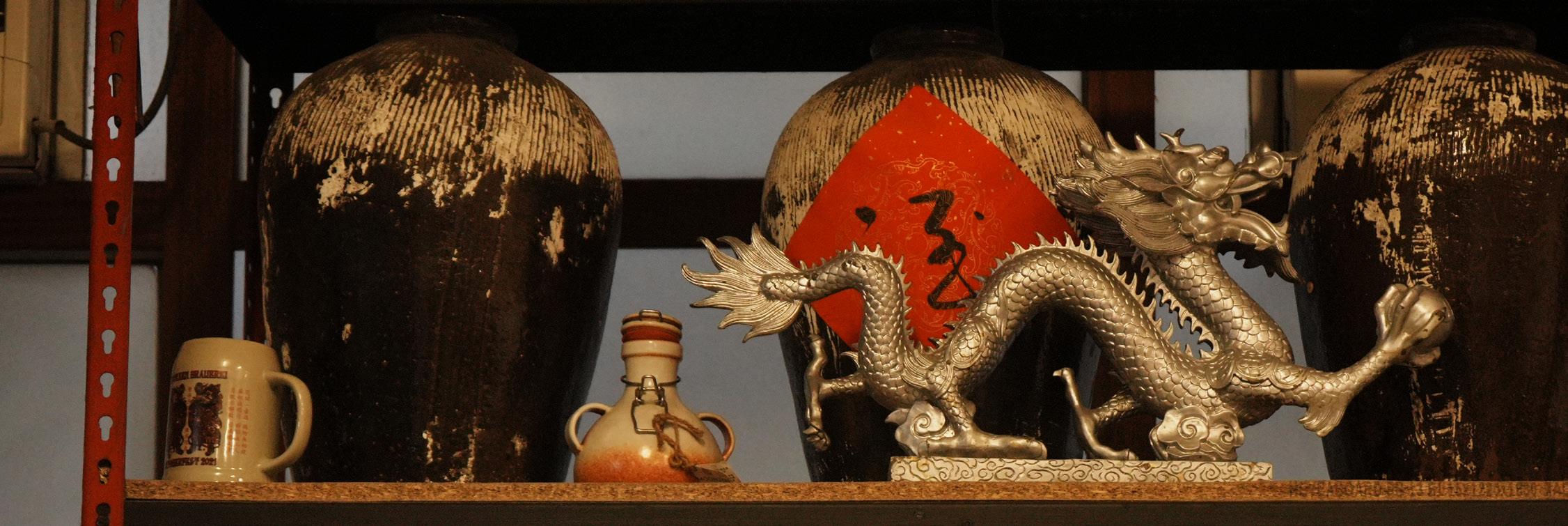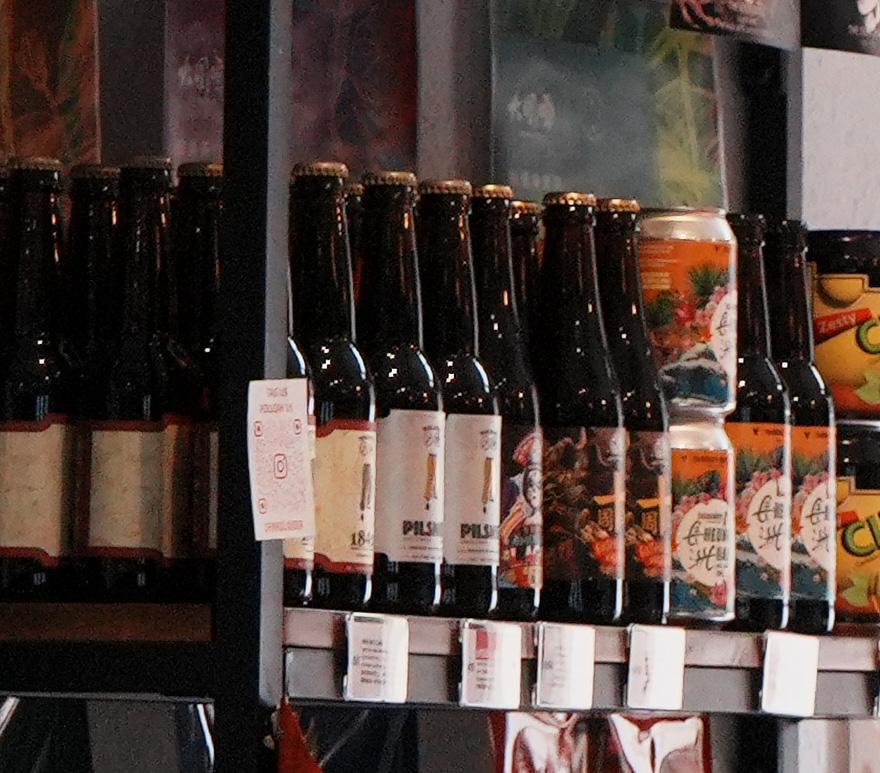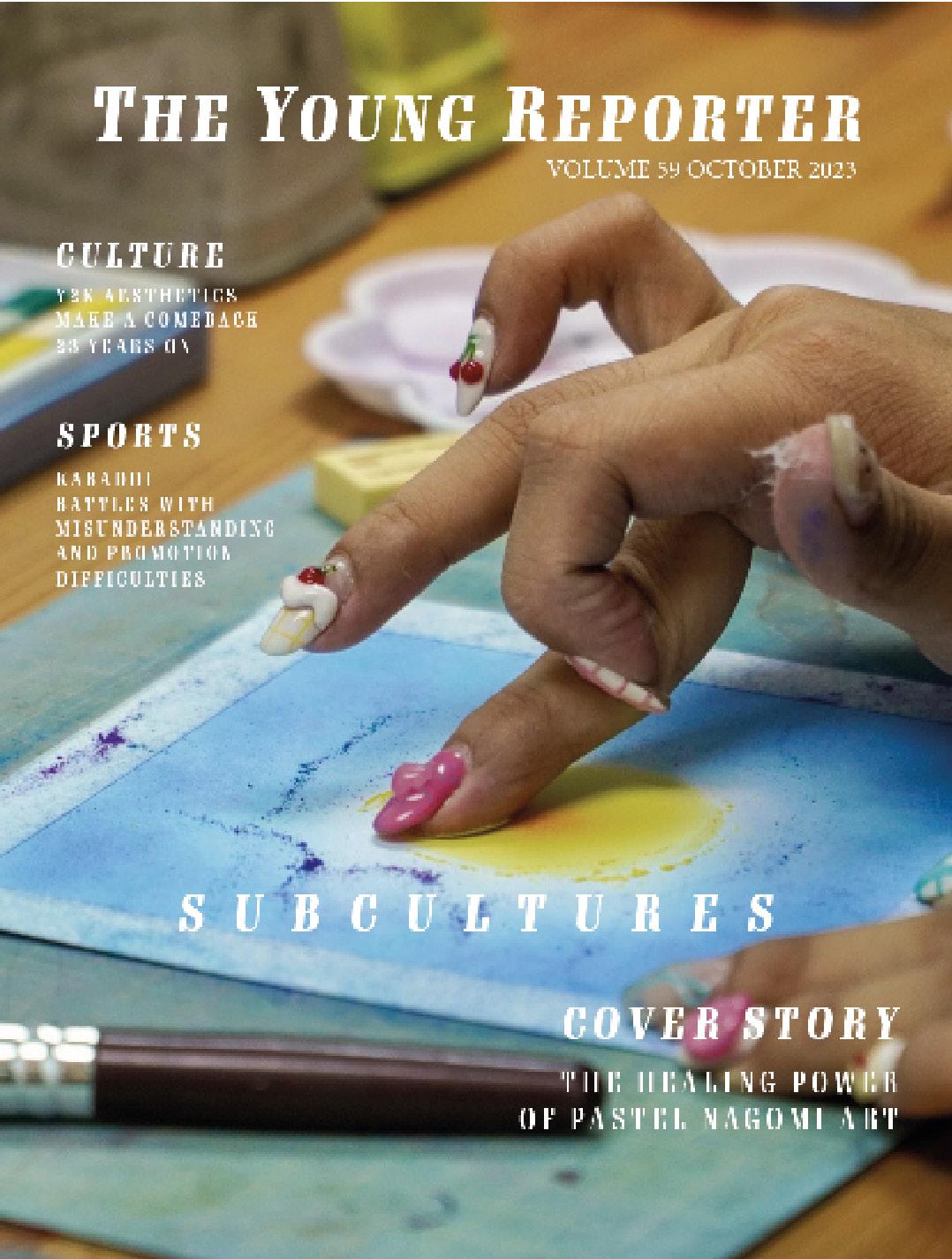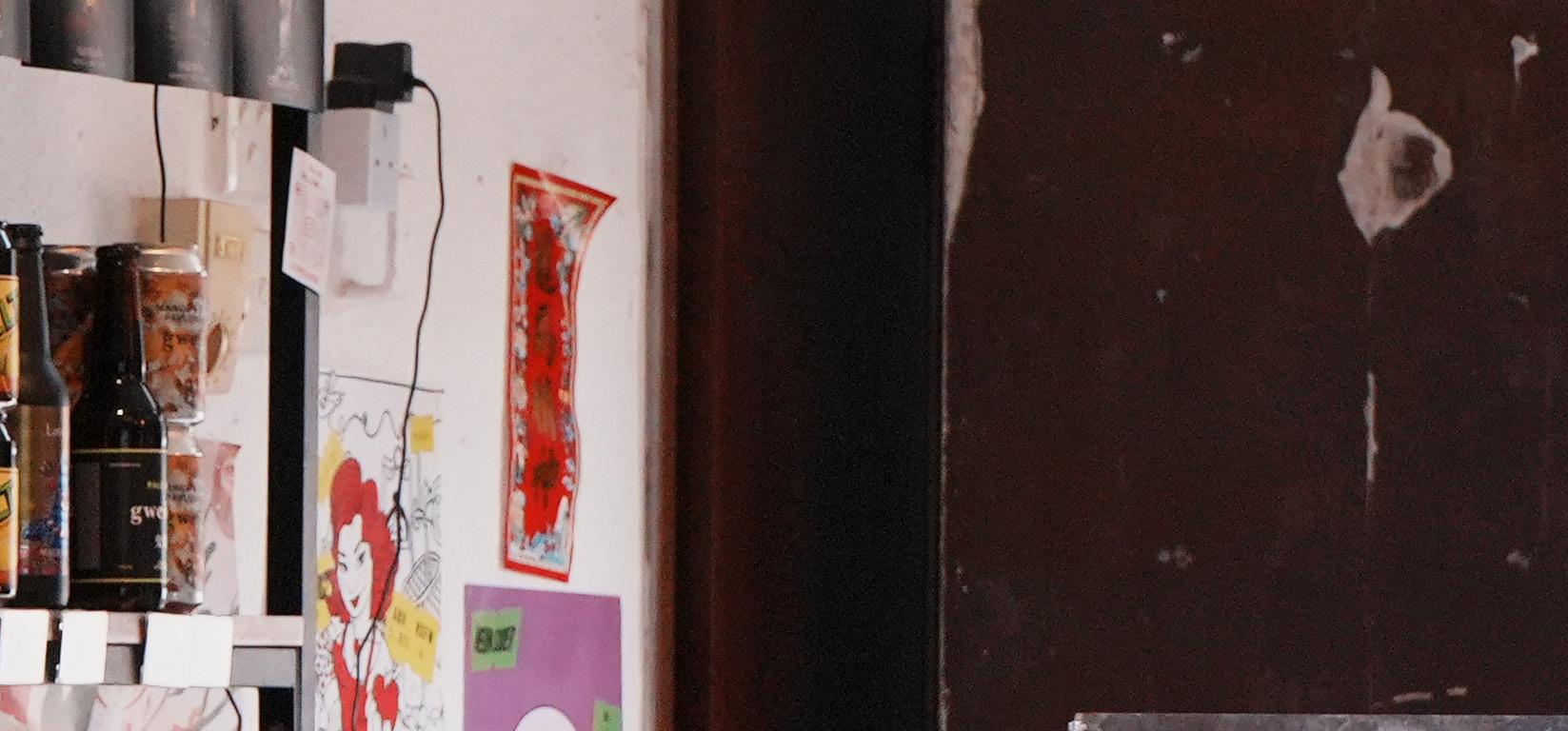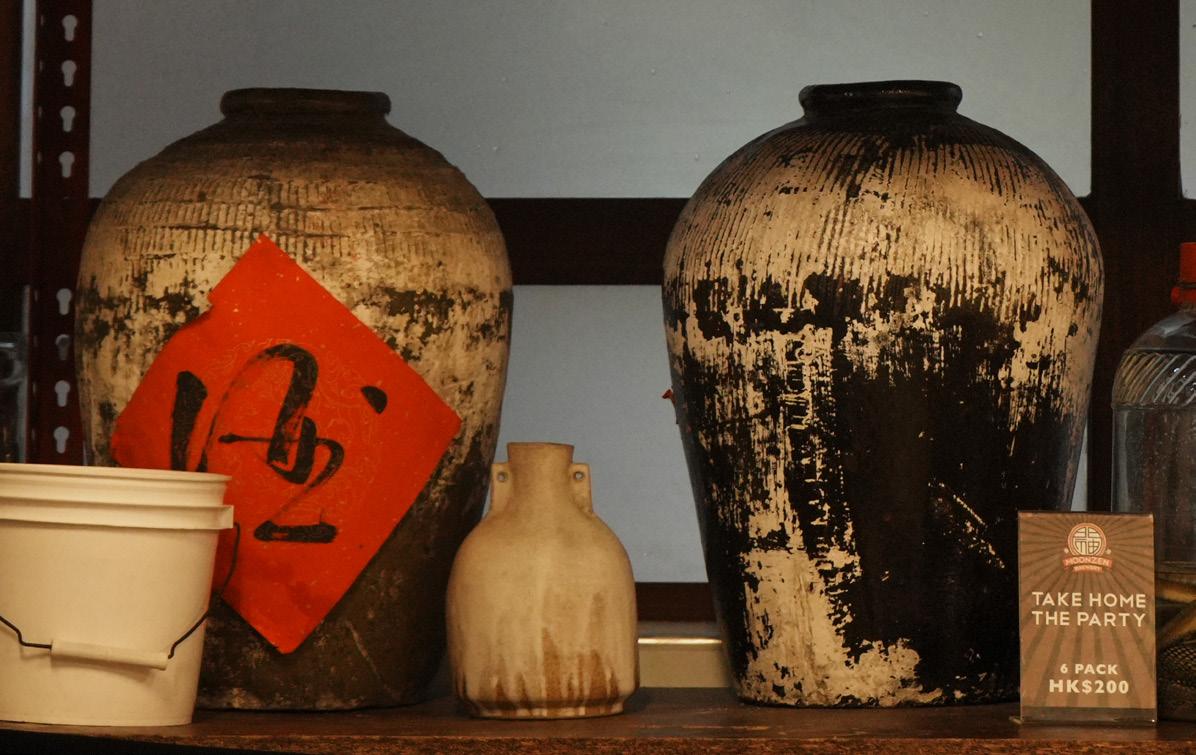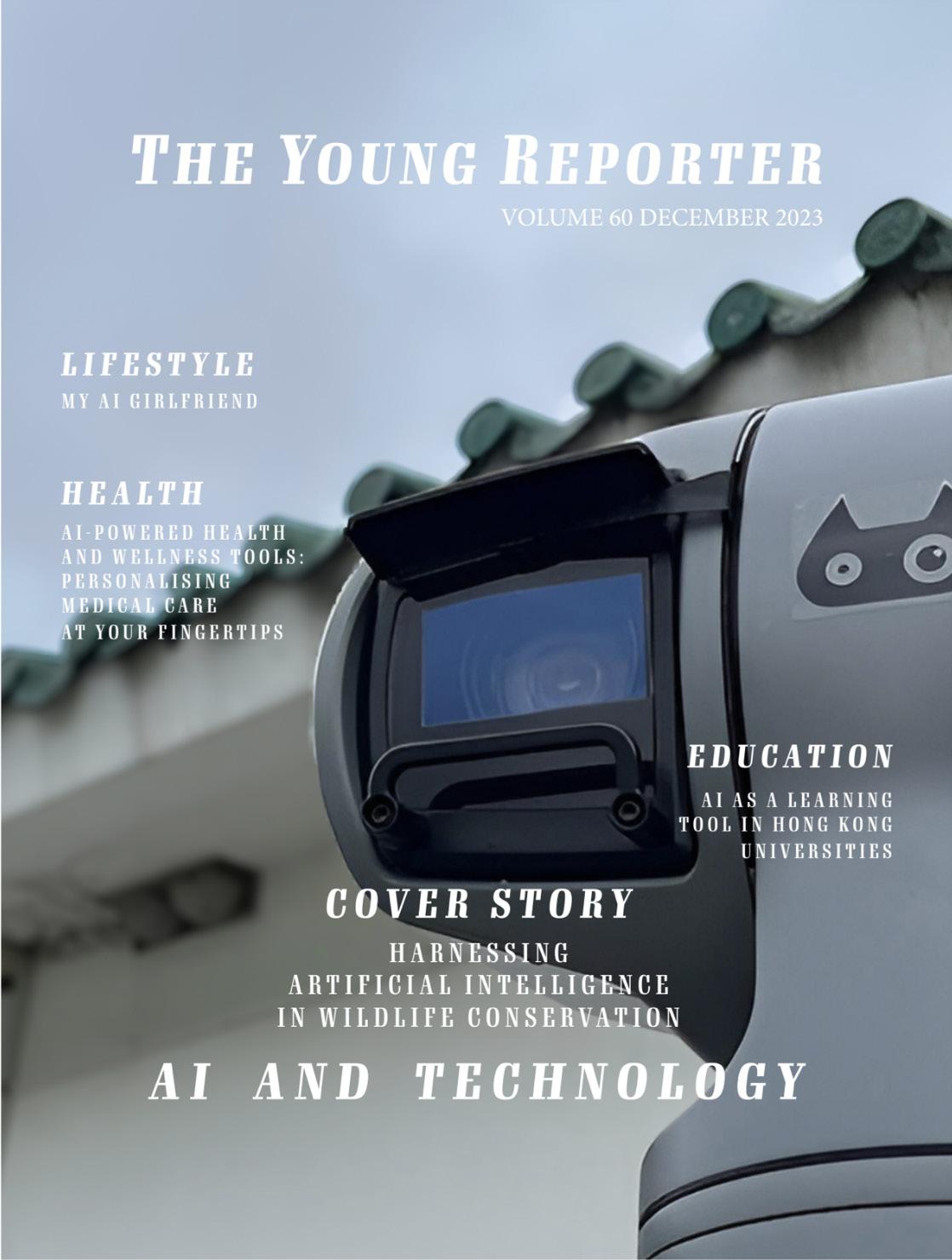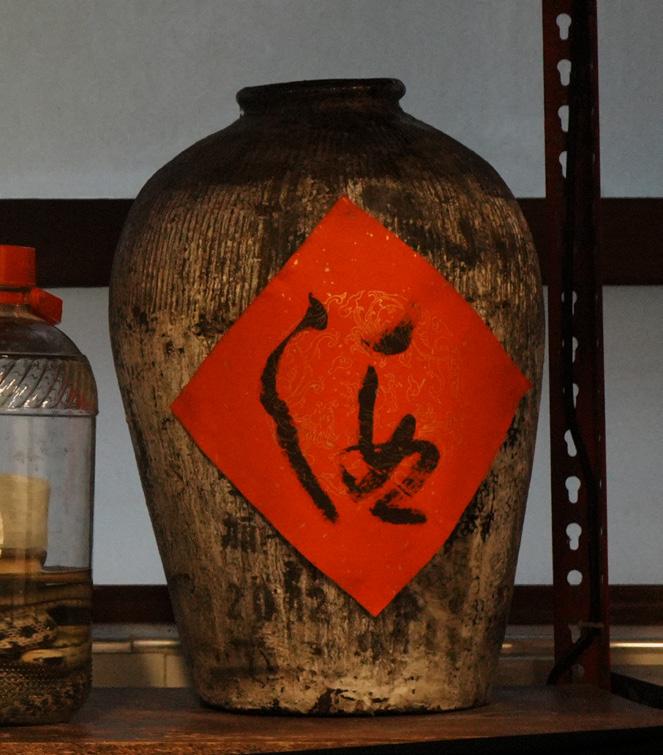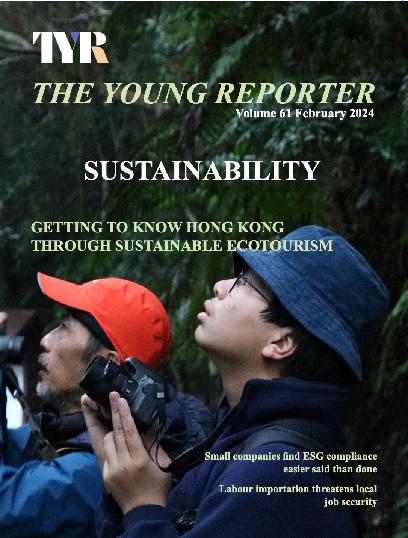
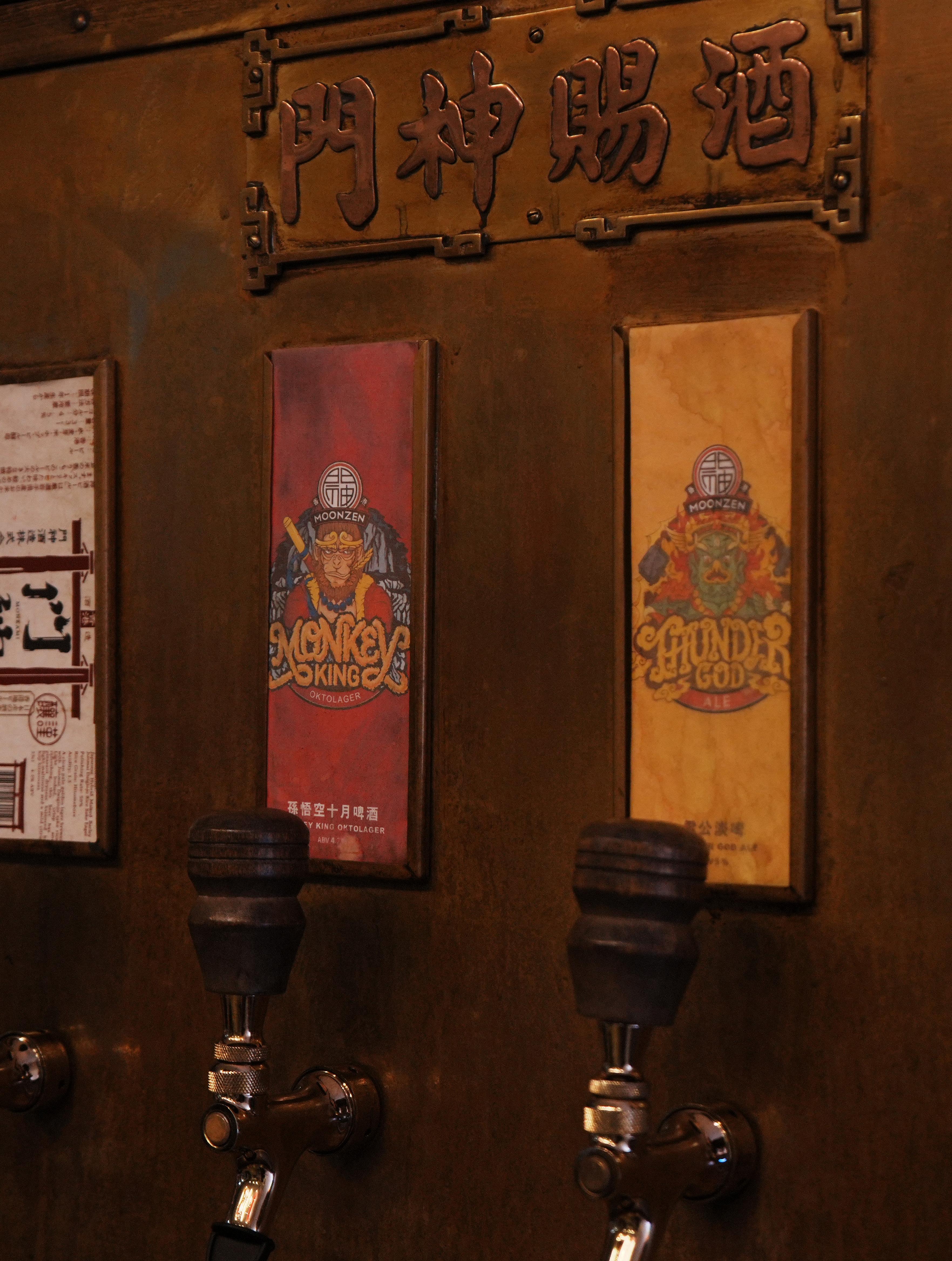
CRAFT BEER IN HONG KONG: BREWERS IN THE POST GOLDEN AGE
Sex toy stores unleash the wild side of Hong Kong's bedroom secrets
Otome games: the rise of the female gaming market



Sex toy stores unleash the wild side of Hong Kong's bedroom secrets
Otome games: the rise of the female gaming market
Artificial intelligence has changed how people write stories. Anyone can get coherent writing with a simple word prompt. Many journalists remain about their scarcity as skilled professionals.
In this edition, I wanted to address this issue by asking our journalists to create something new. I wanted to get together the stories that are not reported on other media, the stories that were not trawled by ChatGPT. By harnessing the individual talents that our reporters had. We worked together to report on something newsworthy that only we could find out.
I hope you enjoy reading this issue as much as we enjoyed writing it.
Sincerely,
Editor-in-chief
Lee Ji Youn
EDITOR-IN-CHIEF
Ji Youn Lee
DEPUTY
EDITORS
Jemima Badajos
REPORTERS
Amelia Bo
Carmen Cao
Connie Wong
Edith Mao
Elain Lai
Haicen Yang
Hannah Wang
Jim Au
Joon Kim
June Xia
Nancy Wang
Nansen Chen
Natasha Ng
Rain Zhao
Sherry Wang
Suri Yang
Tricia Li
Trista Kurniawan
Vinci Ao
Yoyo Chan
Yutong Liu
Zoe Hwang
Zoey Zhang
Nicole Chu
Tom Shuai
Winona Cheung
PHOTO
James Modesto
SOCIAL MEDIA
Siena Cheng
VIDEO
Brian Ng
Renee Tsang
ART
Elif Ayhan
Jeffrey Chan
Vivian Miu
ADVISORS
Jenny Lam
Robin Ewing
PUBLISHER
Zhong Bu
PRINTER
Win Fung Production Limited
PRINTER ADDRESS
Flat G, 13/F, Blk. 3, Golden Dragon Ind. Ctr., 172-180 Tai Lin Pai Rd., Kwan Chung, NT
EDITORS
Aruzhan Zeinulla
Brian Ng
Carmen Wong
Elif Ayhan
Emily Chan
Jacky Poon
James Modesto
Jeffrey Chan
Jemima Badajos
Jerry Li
Ji Youn Lee
Katy Wong
Kelly Chow
Kelly Kong
Marcus Lum
Nicole Chu
Rebecca Yang
Renee Tsang
Sia Rui
Siena Cheng
Tom Shuai
Vivian Miu
Winona Cheung

Sex toy stores unleash the wild side of Hong Kong's bedroom secrets
Otome games: the rise of the female gaming market
Craft beer in Hong Kong: brewers in the post golden age
The wild side of Hong Kong
Breaking the glass ceiling: women in male dominated industries
Hong Kong tries to give the elderly more care when they face death
Reported by Wang Ludan
Edited by Cheng Lisheng
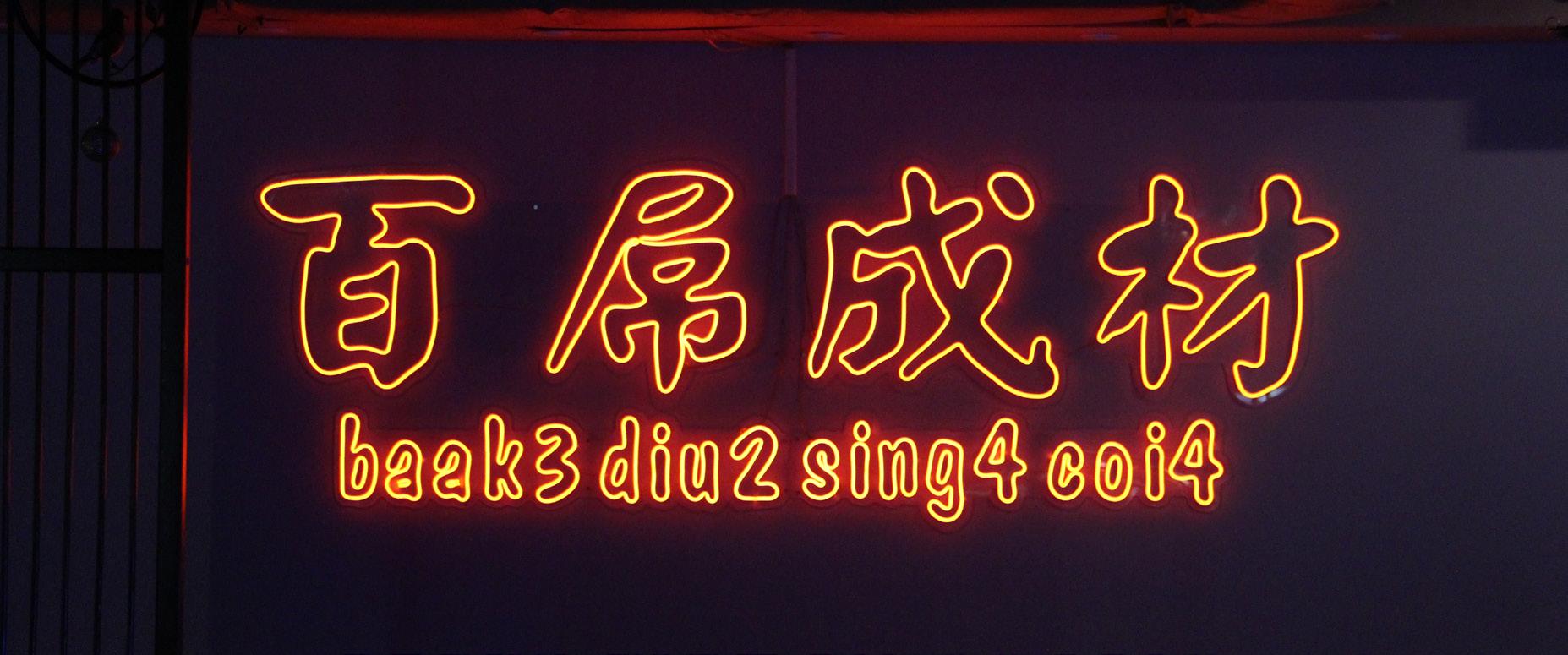
“I had my first orgasm in my life around 4 am with a vibrator,” said Vera Lui, owner of Sally's Toy, an adult centered store in Central which opened 11 years ago.
It is a cozily lit room filled with the smell of woody perfume and piano music. Books on sex and love pile up on the shelves on one side, while another shelf is lined with vibrating dildos of various sizes.
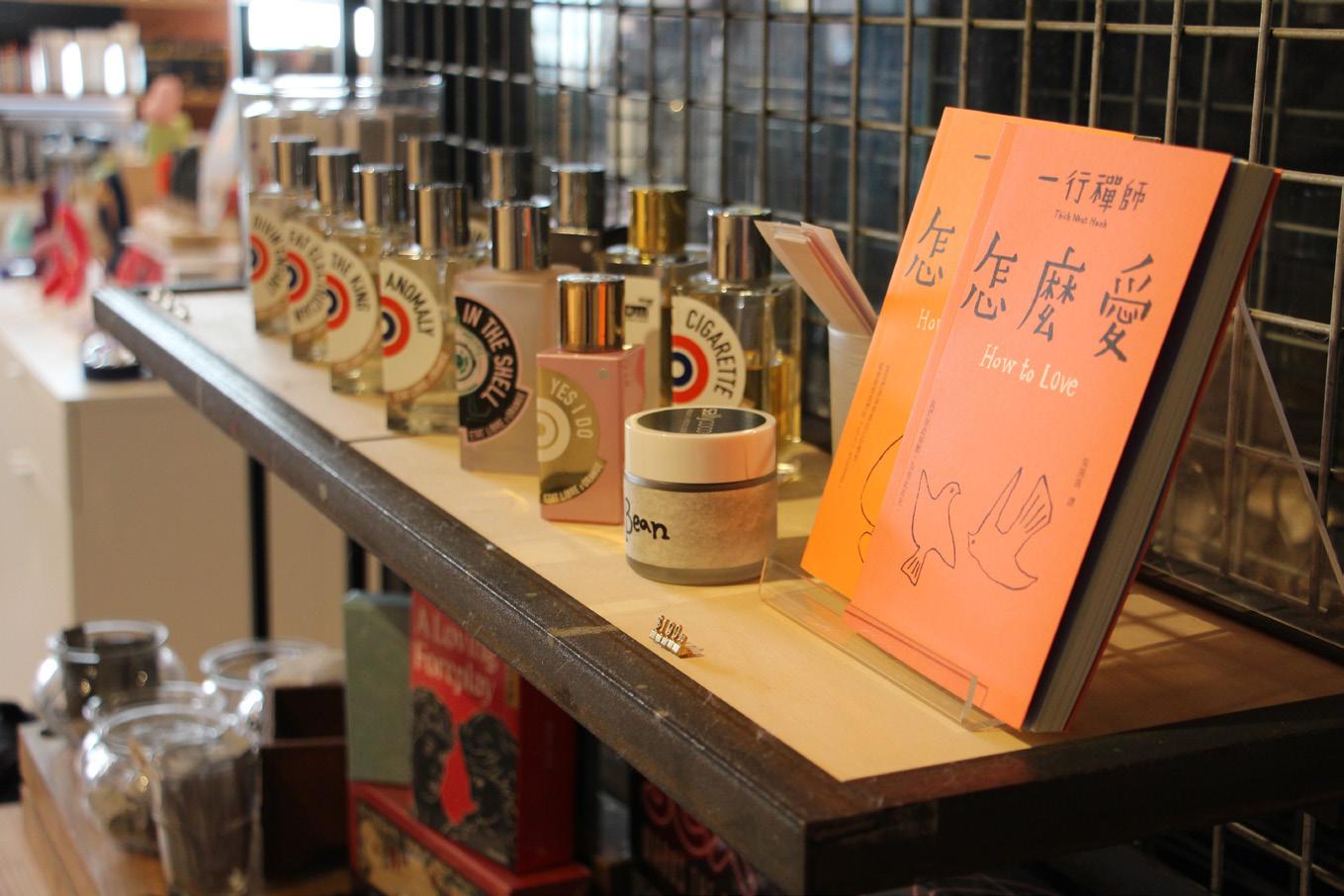
There are more than 18 adult stores in Hong Kong, excluding the night stalls that sell adult products in the Yau Ma Tei area.
The female sex toys market share was the largest in the world in 2021, and is expected to continue growing, according to the Business Wire research report.
Many shop owners and organizations in Hong Kong said that adult toys are not only a pleasure for the body, but also a way for people to explore their own bodies and have a more holistic view of sex.
“ I've been having sex since I was 17, but it wasn't until I was 23 that I felt my body was my own, not a tool to fulfill male needs,” said Vera Lui, owner of Sally’s Toy.
Lui was given her first vibrator by her husband to explore the body and it changed her mind about sex toys.
“It was the first time I used a vibrator,” Lui said. “ After I came home and searched on Google “how to use sex toys”, I understood my lower body structure,” Lui added.
After the climatic epiphany, Lui wanted to spread her experience and knowledge about sex toys to as many people as possible. Lui and her husband opened Sally’s Toy in 2010.

“You would be hard-pressed to find an adult store in Hong Kong where you could properly recognize sex toys and explore your own body in 2010,” Lui said.
Lack of knowledge about sex and shame about being judged by others may prevent people from stepping into sex toy stores.
“Most schools in Hong Kong did not have an open attitude towards sex education like overseas and I learned little about sex during my school years,” Lui said.
According to studies done by “Teen’s Key”, a non-profit- organization promoting sexual values among youth in Hong Kong, the number of unwanted pregnancies among teens has risen sharply in recent years,
and sex education in Hong Kong is inadequate. Some underage girls are helpless during pregnancy.
Calsson Yam, opened "Spotted Dove", a multi functional sex store in Tsim Sha Tsui. “Hong Kong people are actually sensitive to sex love topics, so I set up my store as a multi-functional sex toys store that also sells coffee and wine.”
“ I hope I can provide consumers a casual space to let more couples buy sex toys and talk about whatever they want at the same time," Yam said.
A sample survey by Tatler Asia shows 80% of respondents had never used sex toys before, and more than half claimed they were reluctant to try them. This opposition stems from prejudice, with 38% believing sex
toys are kinky and unsightly.
“ I would feel uneasy if strangers saw me entering a physical sex toys store, as if I would be invisibly labeled as a slut and a miscreant,” said Lucy Zhang, 48, who has never used any sex toys.
“Regardless of my age, the image I want to be thought of as decent, so the erotic lingerie and some masturbation products may give me the wrong image.”
“ I can’t understand why some people are obsessed with purchasing sex toys and label them as fun for couples,” said Wendy Zhang, 22, a college student.
Zhang thinks of sex as a secret sanctuary for two people, and buying sex toys is not necessary for her because it makes her feel her sex life is being spied on.
“Some girls have body anxiety,” said Vera Lui about her customers. “They are hesitant to try on SM suits, erotic uniforms or anything else because they think that such revealing and sexy clothes are not aesthetically pleasing on them.”
Common6 is a community platform that regularly organizes lectures and sharing sessions on sexuality topics so that people in Hong Kong can talk about sex and spread the word that sex is not an ordinary thing.
“People around me often lack knowledge about sex, so they have certain stereotypical ideas about sextoys,” said Cleo Lo, a sex toy store owner.
She thinks more women are willing to buy sex toys in recent years.
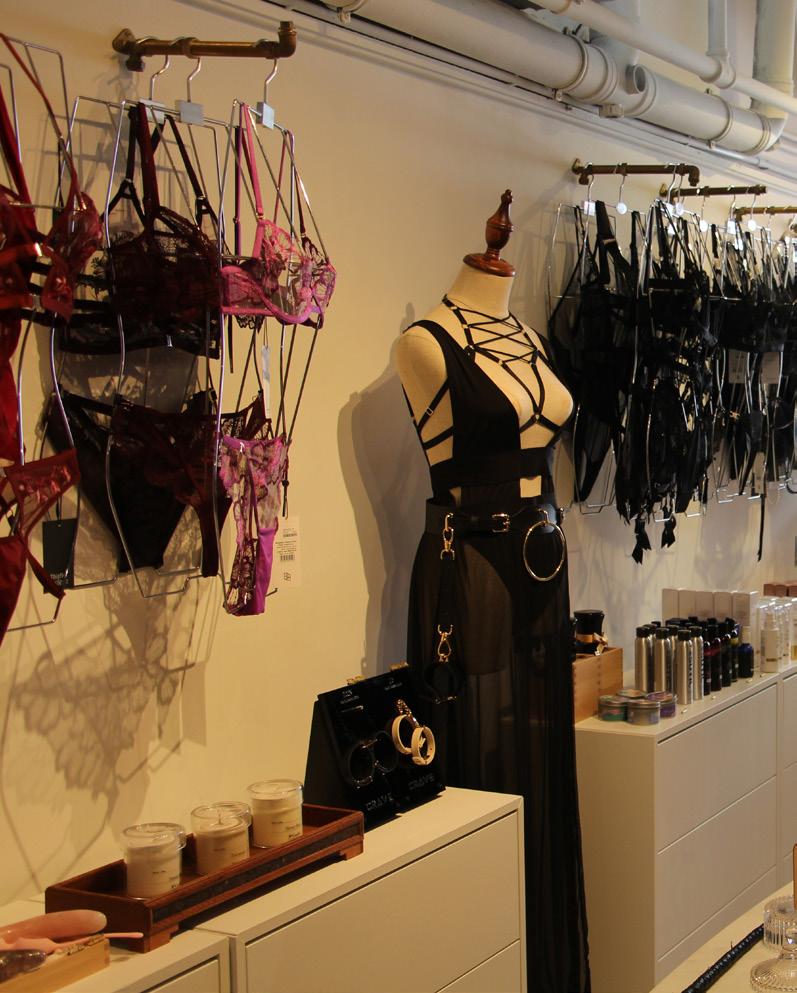
“If no one in their families and or their friends buy these sex toys, and they don't understand that actually some sex toys are designed for women, then they will have some prejudice,” she added.
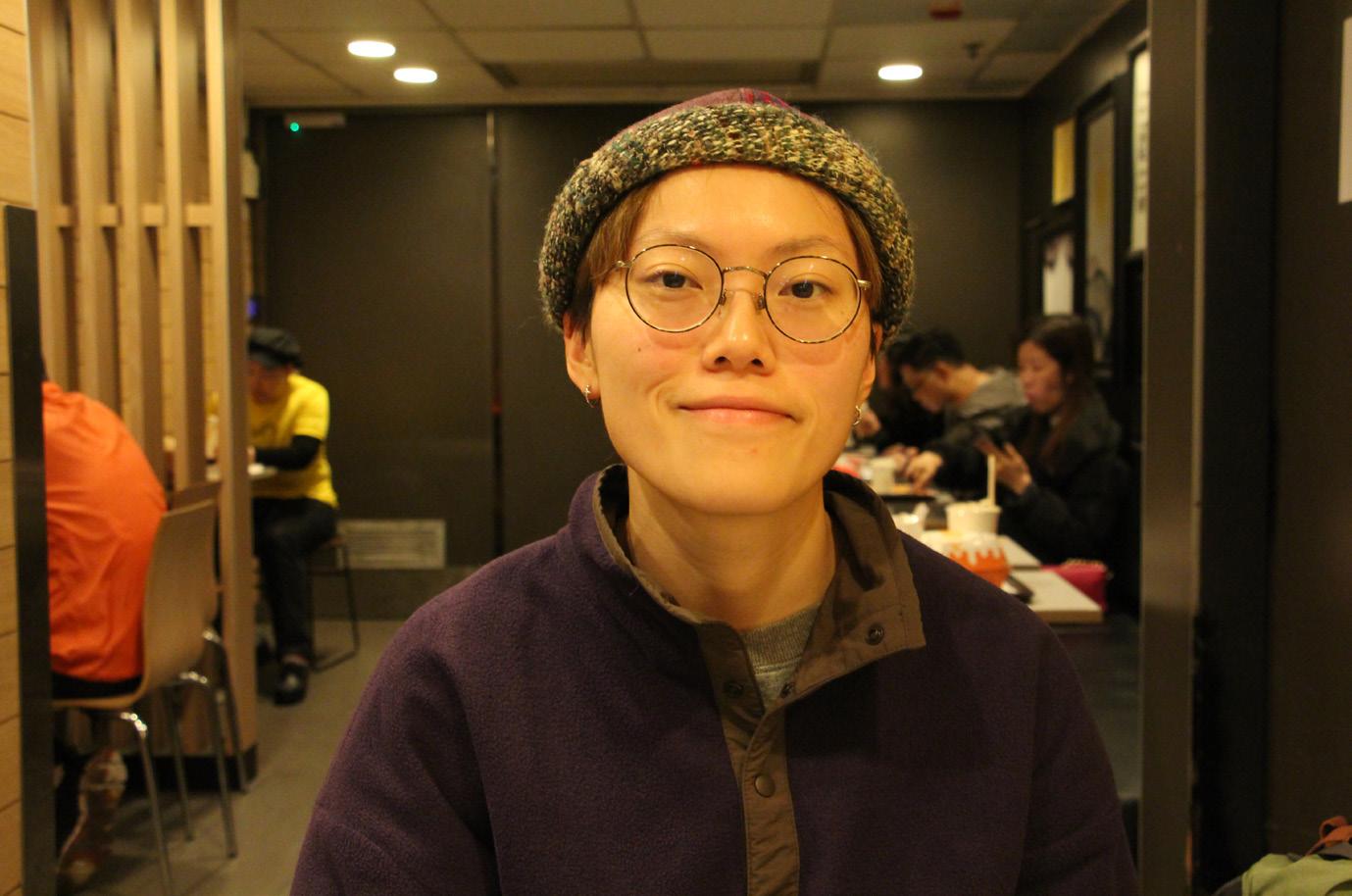
Cleo Lo, one of the owners of Common6, said: “I think the reasons that bother women when it comes to buying sex products are not only shyness or embarrassment, but also a lack of knowledge.”
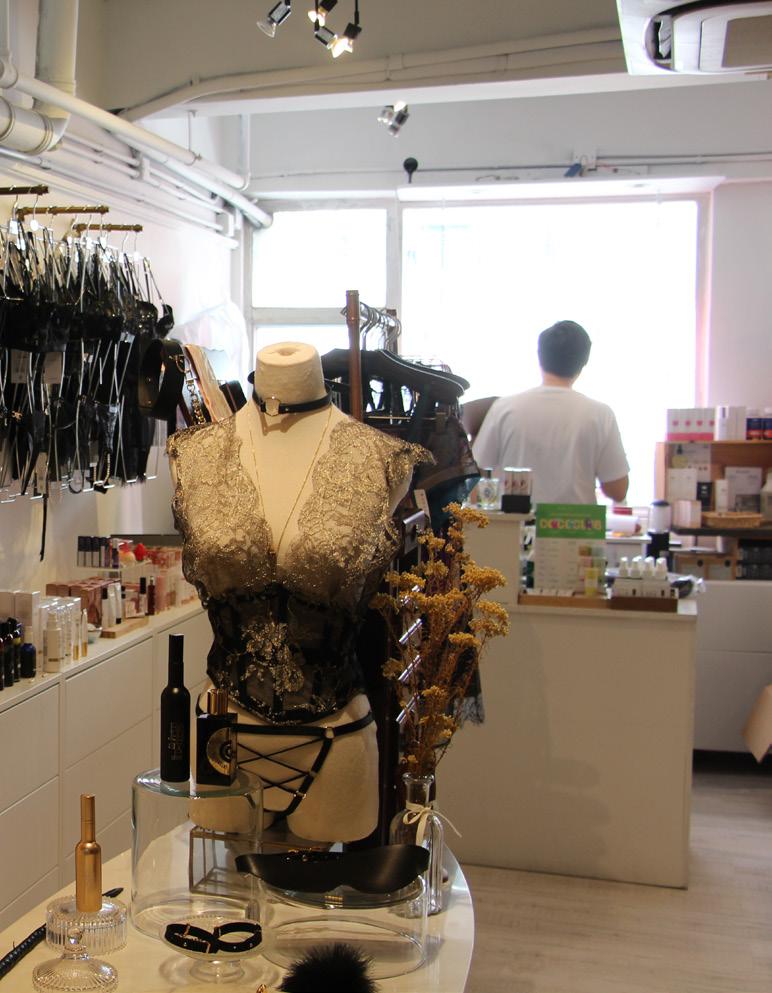
elegant, and something that can be displayed
and weird as everyone thinks,” Lui said.
The attitude of some families may also affect people's exposure to sex toys. Lui said her parents think sex toys are explicit and pornographic. So in the early days of the business, she didn't really talk to them about what her store was for.
Sally’s Toy, as a veteran brand of Hong Kong sex toys, didn't do a brick-and-mortar store in the early days of the business, but rather an online store.
“My husband and I worked together to design a beautiful website at the beginning because we thought most people in Hong Kong would be shy, and they might prefer to see an online store as opposed to a physical one, “ Lui said.
But the reality is beyond the couple's expectations. At least 20 customers a day call and ask
Lui and her husband how to use the products they purchased.
“I feel like a doctor. Every hour I would tell different customers what their lower body is made of, how these sex toys should be used, and which sensitive part they are targeting,” said Lui.

When online shopping wasn't the norm, there were always customers willing to take a taxi to Lui and her husband's humble warehouse and see what their sex toys looked like.
But now, Lui does more evaluation videos on social media and tells people how to use these sex toys. “Unexpectedly, my first YouTube video received a lot of positive reviews and reposts, which was the beginning of my career as a blogger, Lui said.
Reported by CAO Jiawen and WANG Ruoshui
Edited by Cheng Lisheng
Every night in bed, Lang Yunan, 22, chats with Sun Ce, a male character in an otome game. “If you are a tree in the east of the river, I'll be the water of the Yangtze River, wrapped around you.”
Otome games, or maiden games, are plot-based video games that target women players.
In Lang’s game, there is a mix of adventure puzzle solving and female growth, set in the Eastern Han Dynasty in China, where the player takes on the role of a female disguised as a male leader of a secret agent organization. Girls will interact with various characters, especially with the other five main male characters to complete a variety of game tasks, but also based on the player's choice, so that the male and female main characters have mutual feelings for each other. It offers women a chance to discuss relationships within the safe confines of a game.
In 2023, sales from the domestic otome game market totaled
HK$32.6 billion according to Talkingdata.. ” The global market revenue for “Ashes of the Kingdom” was about HK$70 million, and "Light and Night" earned more than HK $37 million in the 2022 iOS system.
but in the last two years, there have been more women coming to our store to buy the latest Otome games," said Cheuk.
Until Dec. 2023, GSE has re-

Katy Cheuk, 40, Game Source Entertainment's (GSE) head of sales, said she has seen a significant increase in the number of games sold to women since 2021. "Before, it was almost always boys who bought games,
leased 42 types of otome games and sold tens of thousands of units in Hong Kong.
Ding Boyao, 20, a student from Hong Kong, said the otome game provides her with a kind
of emotional "alternative satisfaction" that is difficult to realize in real life.
“I've tried a lot of otome games, and they all have different stories and characters, but in general, they've filled in some of the gaps in my relationship in real life and made me feel like I'm in love,” said Ding.


“My favorite male character in Light and Night Love is not only responsible but also attentive and often makes my heart flutter,” said Ding In 2020, the sales revenue of China's female game market will reach
“Most female gamers play these games as a form of mental compensation for real-life relationships,” Xu Xingya, a professor at the Department of Psychology at the Chinese University of Hong Kong, said.
“Even though I know that these male characters I come in contact with when I play otome games are virtual, I still enjoy the emotional fulfillment I get during the game, and it makes up for the fact that I don't have a mate to interact with in real life,” said Lang.
To better meet the needs of players, game design companies continue to develop technology, through the use of dynamic light and shadow effects, weather time period changes, and other technical means, so that the environment in the game can change with the development of the plot, to create a rich atmosphere and a sense of immersion “In the context of 2D art pres-
entation technology, the game's art team needs to maintain a unified visual style in presenting diverse scenes and characters, while also focusing on smooth transitions between systems, levels, and scene transitions in the game to ensure that the player's immersive experience is smooth and not out of place," said Li Pengfei, a professor at the School of Digital Arts at Jinan University.
"The beautiful graphics always make for an immersive gaming experience for me. While playing Ashes of the Kingdom, there was a storyline where I was betrayed by one of the male protagonists and at the time, in reality, I was pissed off. It was like it was happening in real life,” said Ding.
Wu Yuxun, 21, a student who has played the otome game for two years, said otome games echo the personal growth and emotional needs of female players.
“It can be empowering for all female players because the male protagonists in the game are working together with me to complete the mission. They are always here for me and encourage me, which provides me with positive emotions,” said Wu.
Otome games have gradually moved from online to offline through cosplay. Actors dress as otome characters and accompany players to experience real-life offline love mode to

earn money, but also to meet the players' emotional needs.
This trend of the offline industry has enriched the otome game industry and started to gradually form a kind of popular culture.
For those who are prejudiced against the game, Ding said that everyone should respect other people's preferences.

Wu said that her favourite role is Xiao Yi in “Light and Night”, attracting her first handsome appearance after the plot of his tragic life made her full of love for Xiao Yi
“ It shouldn't be simply labeled or misunderstood, and women also have the right to pursue their emotional needs.” said Ding Boyao.
Reported by YANG Haicen and ZHAO Runtong
Edited by SHUAI Juncong
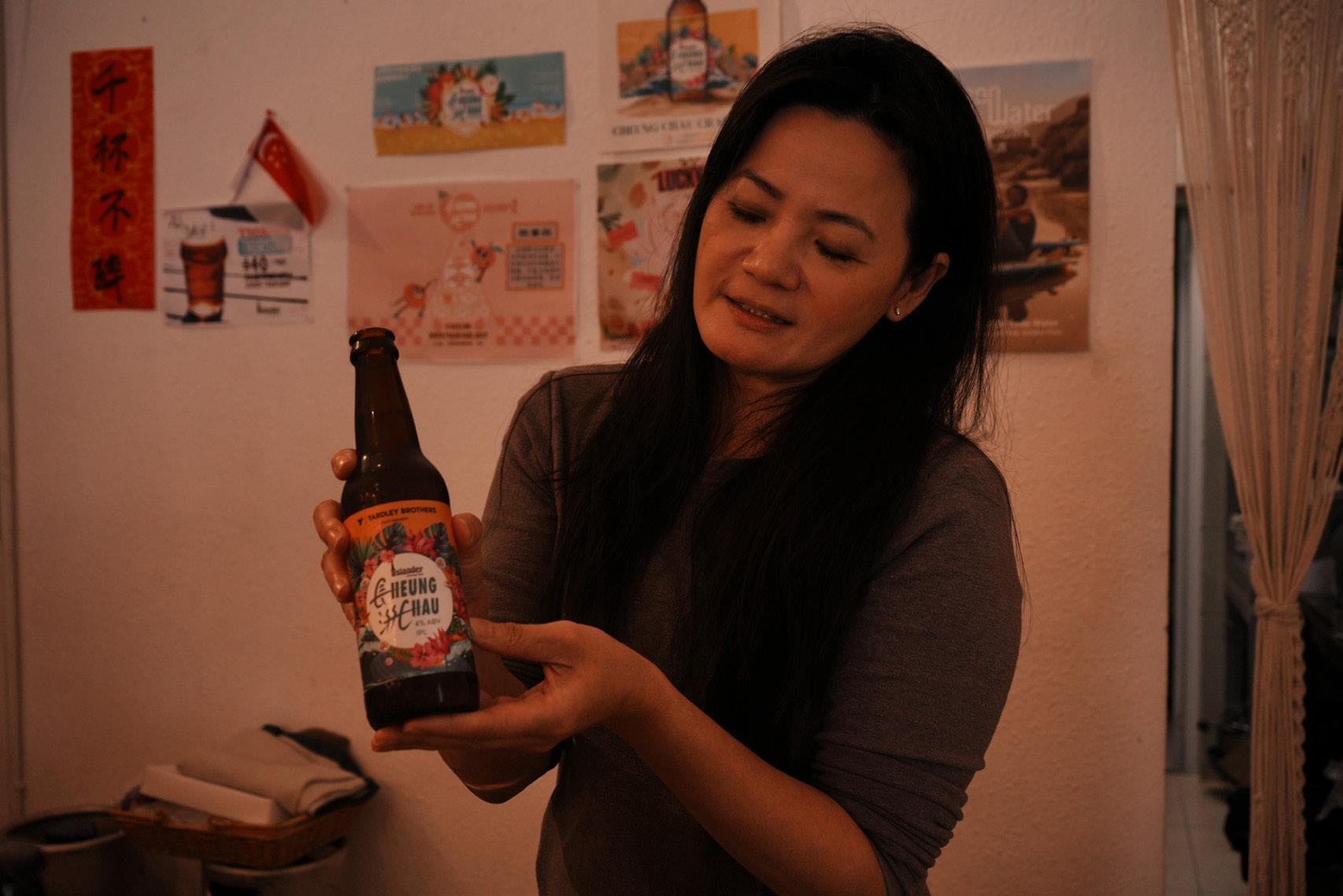
One of the store's featured products is ‘honey beer’ which was founded in Cheung Chau. It Incorporates the unique culture of Cheung Chau into the design craft breweries.
Along Tung Wan Road on Cheung Chau Island, hides an inconspicuous pub, with its name, “Island”, on a small brown sign.
Everyday, 37-year-old hostess Vicky Du stands behind the pub counter, pouring beers and tasting them with customers.
“We sell craft beer here,” said Vicky, “when I first tasted it, I
fell in love with it and wanted to share it with more people.”
“I introduce craft beer to every drinker I meet because I think everyone deserves a taste,” she added.
Island’s liquor cabinet was filled with a wide selection of fine packaged beers. Some of them imported, but the vast majority were made in Hong Kong's local
But Cheung Chau Island lacked the facilities for a brewery. So Vicky developed her own beer-ingredient list and later collaborated with various Hong Kong breweries for mass production.
“The biggest characteristic of craft beer is its diversity,” said Vicky Du. “You can custom-
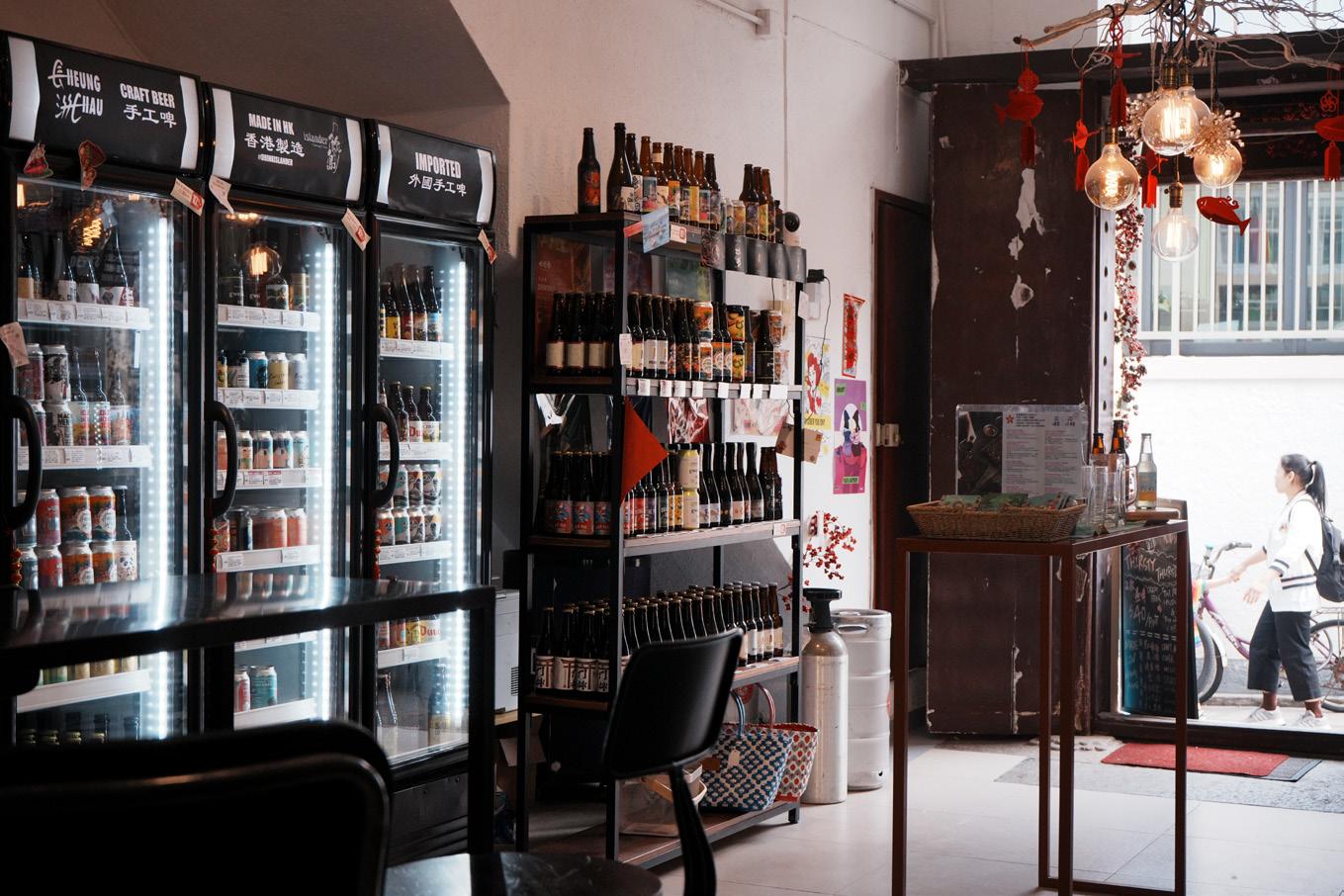
Inside ‘Island’ pub, Cheung Chau ise the recipe to whatever you want.”
Unlike mass-produced beers, craft beers are usually produced in smaller quantities and accounted for a smaller share of the market. However, as more and more flavours are introduced, craft beer is increasingly popular with drinkers as a way of personal expression.
According to figures released by the Census and Statistics Department, the number of specialised outlets selling alcoholic beverages in Hong Kong increased from 140 in 2008 to 460 in 2019. On the export side, craft beer has been the mainstay of Hong Kong's alcoholic beverage export.
Hong Kong saw a golden age of craft beer in the past decade, with nearly 25 well-established local breweries, and countless pubs popping up every year, according to Business Digest, a Hong Kong commercial infor-
“We started to craft beer because it was a new concept at the time,” said Raphaël Ladislao , the 38-year-old founder who came to Hong Kong from Mexico in 2009, “When we were looking for a name, I thought of the gods standing at the entrance of the temple where I went to pray for the brewery, and so came 'Moonzen'.”
“We hope to promote traditional Chinese mythology through our brewery,” said Raphaël, “because I have fallen in love with its size and exquisiteness,”.
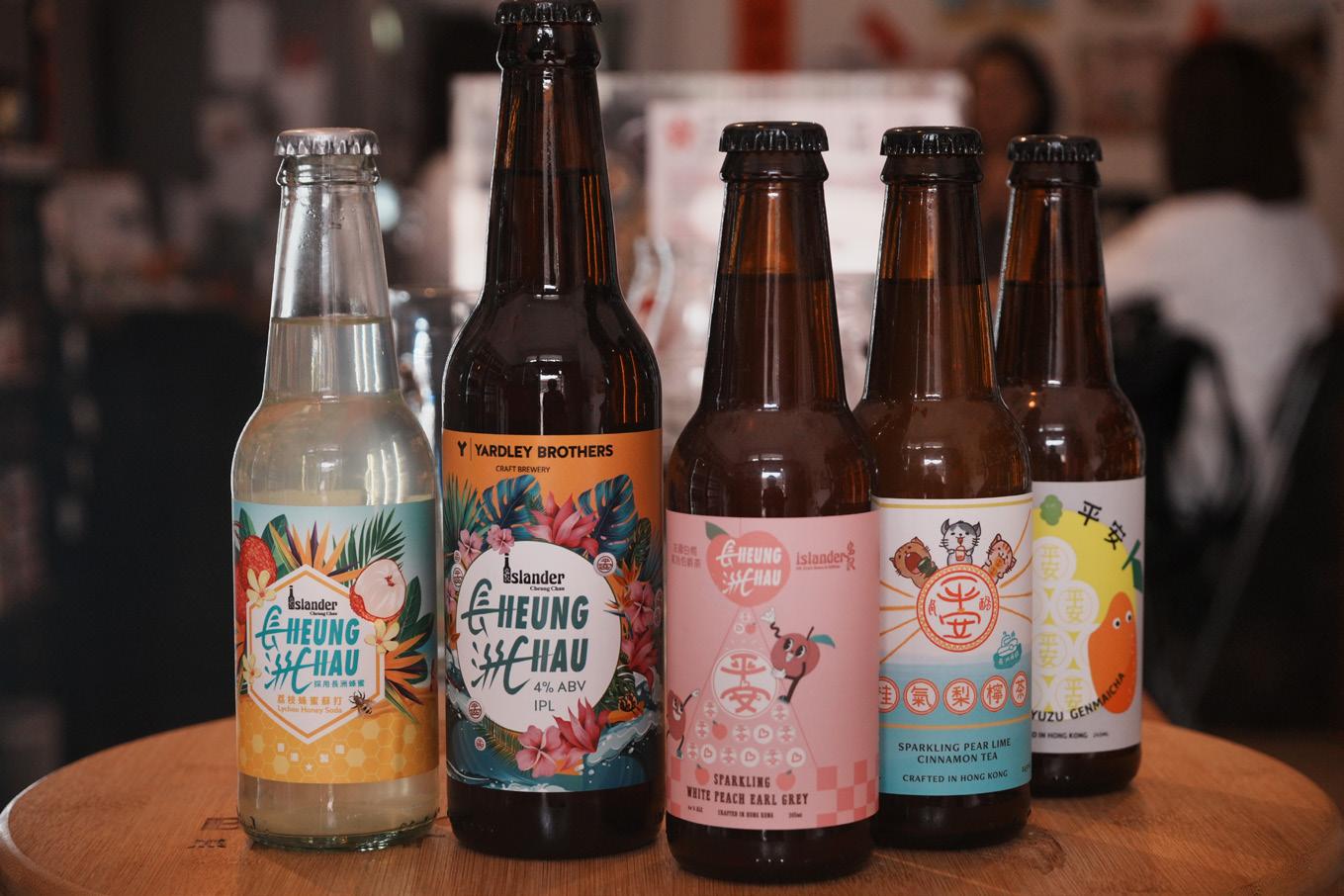
mation platform.
Among them, Moonzen, a brewery founded in 2013. It is one of the first breweries in Hong Kong to offer craft beer. The name comes from the Cantonese “Munsan”, which is a god who guards the door and brings good luck to people in traditional Chinese mythology.
Moonzen has launched a series of craft beers themed after mythological characters, such as Thunder God Beer, Sun Wukong Beer, and Jade Emperor Beer.
"These mythical characters correspond to different craft beer flavours. We have more than 10 craft beer flavours allowing drinkers to choose the taste that
suits them," said Adam Raby, Director of sales of Moonzen brewery."What’s more, because our output is small, we can do better brewing to make it taste stronger than industrial beer.”
“Craft beer also has a unique market position. We target one group with each beer because each brand has its own recipe,” said Raphaël. Moonzen’s customers can customise their own desired flavours and choose their own beer recipes to brew.
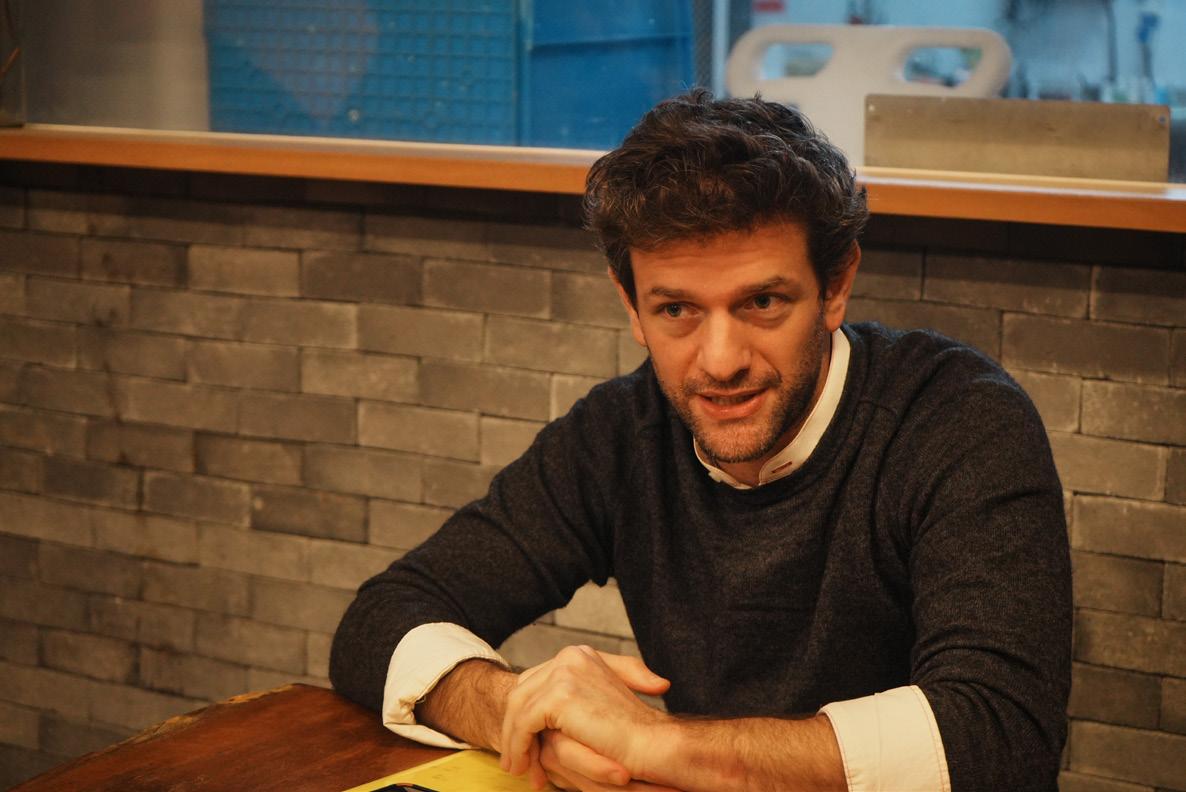
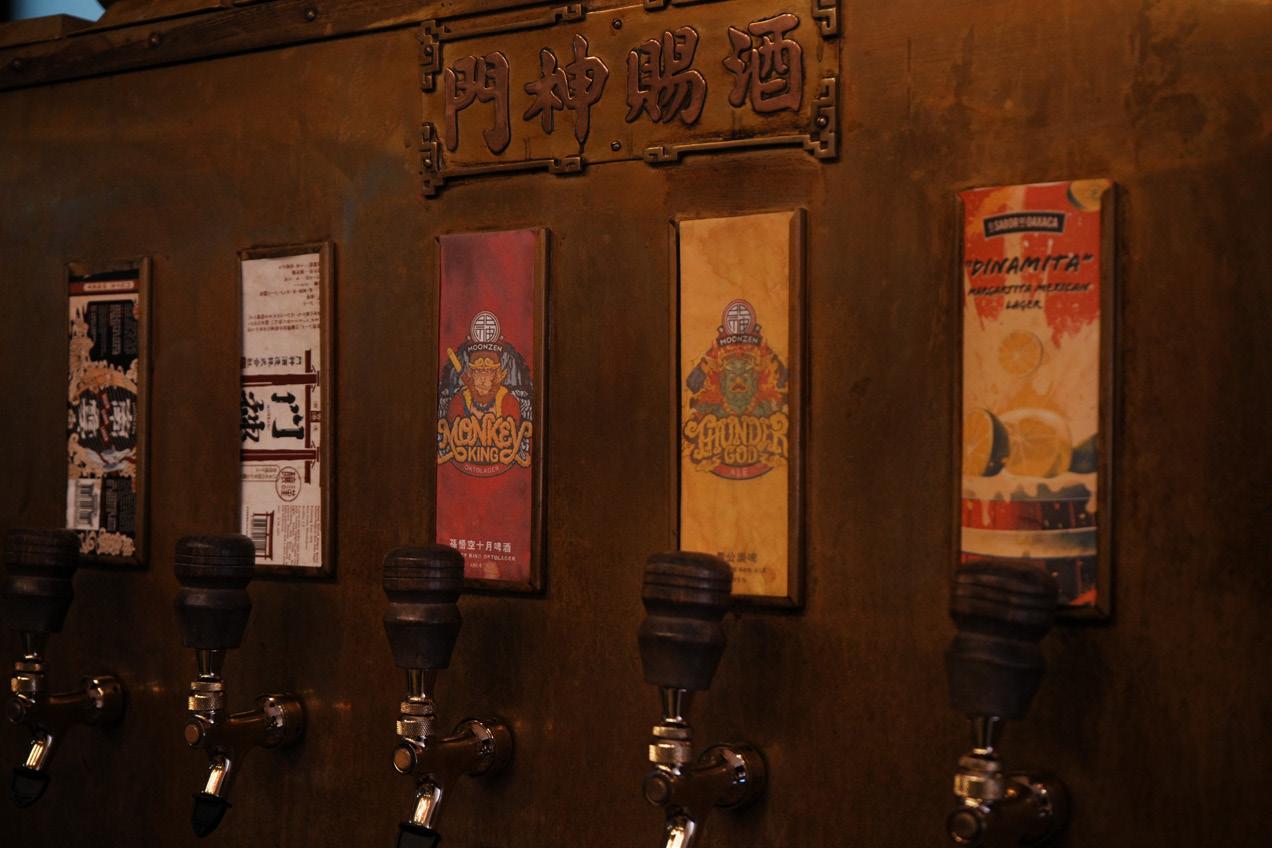
Raphaël digs into the history of craft beer in addition to selling them. “A few years ago, we collaborated with Stanford University and the Chinese Archaeological Institute to recreate a prehistoric Chinese craft beer that was around some 7000 years ago,” said Raphaël. “We went to an ancient wreck in Shanxi Province to explore how the Neolithic Chinese brew beers using koji, barley and millet.”
With the data collected, Moonzen listed a new brand that restored the original taste of the archaic craft beer as much as possible.
But with the popularity of craft beers, Moonzen is no longer the only brewery in Hong Kong, “Some breweries are emerging at a fast pace,” said Adam, “What we need to do is keep our loyal customers and talk to young people.”
Among these burgeoning brewers, "Deadman", who also collaborated with Island, has already been a big name across Hong Kong since it was founded in 2018.
“We ourselves are synonymous with being young,” said Gerry Kuo, the founder of Deadman.
Football, darts, bands, pool, Deadman is more like a club than a brewery. "Every Friday night we have a party in the brewery with free drinks," said Gerry, "and this is how we talk to the younger crowd."
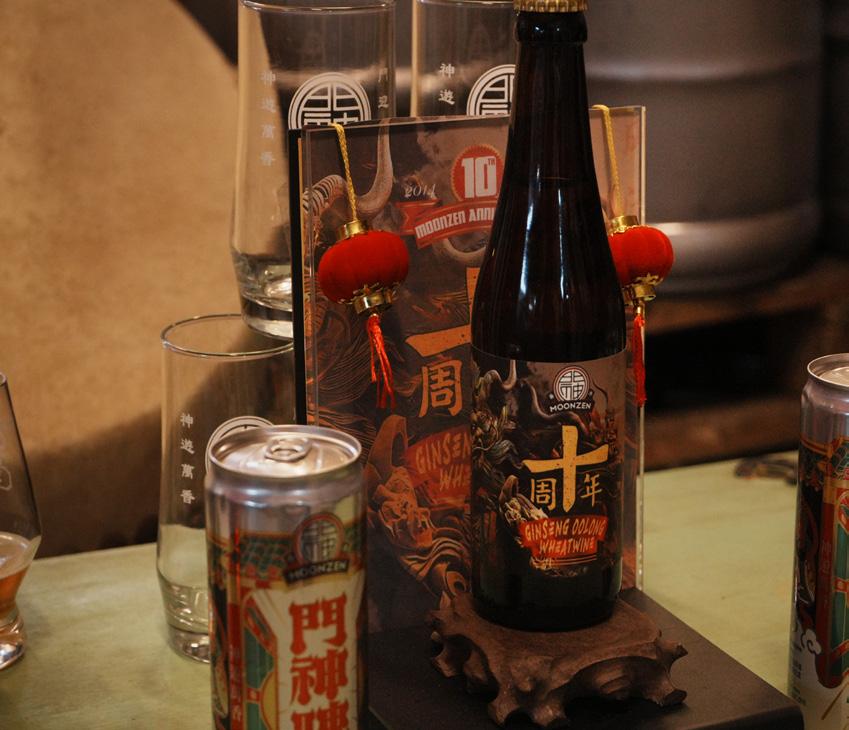
“We won the best Asian brewery competition in 2020, and then the best Hong Kong brewery in 2023,” Gerry said. “When business is good, we sell a maximum of eight tonnes of beer a month."
At first, Gerry just bought his own brew kit and started brewing on the rooftop of his house, out of personal interest. He then bumped into an old friend on a factory tour who wanted to start a brewery and that’s how it started.
“Then we give it a cool name, Deadman,” he said, “because everyone's a dead man walking in Hong Kong, working their asses off.”
With the classic skull and crossbones logo and personalised zombie bottle packaging, “Youth” and “rebellion” were the two keywords that branded Deadman.
“We have a very young team,” Gerry said, “and we always try to test and develop new products.”

Moonzen’s 10th anniversary edition.
Jason, 25, a chemical engineering graduate, was the brewer of Deadman. “Using different moulds and hops, increasing or decreasing the dry hop process, all affect the ultimate flavour,”
“Most breweries, on the other hand, were not so lucky,” said Lau.
"Unlike ten years ago, there are so many craft beers on the
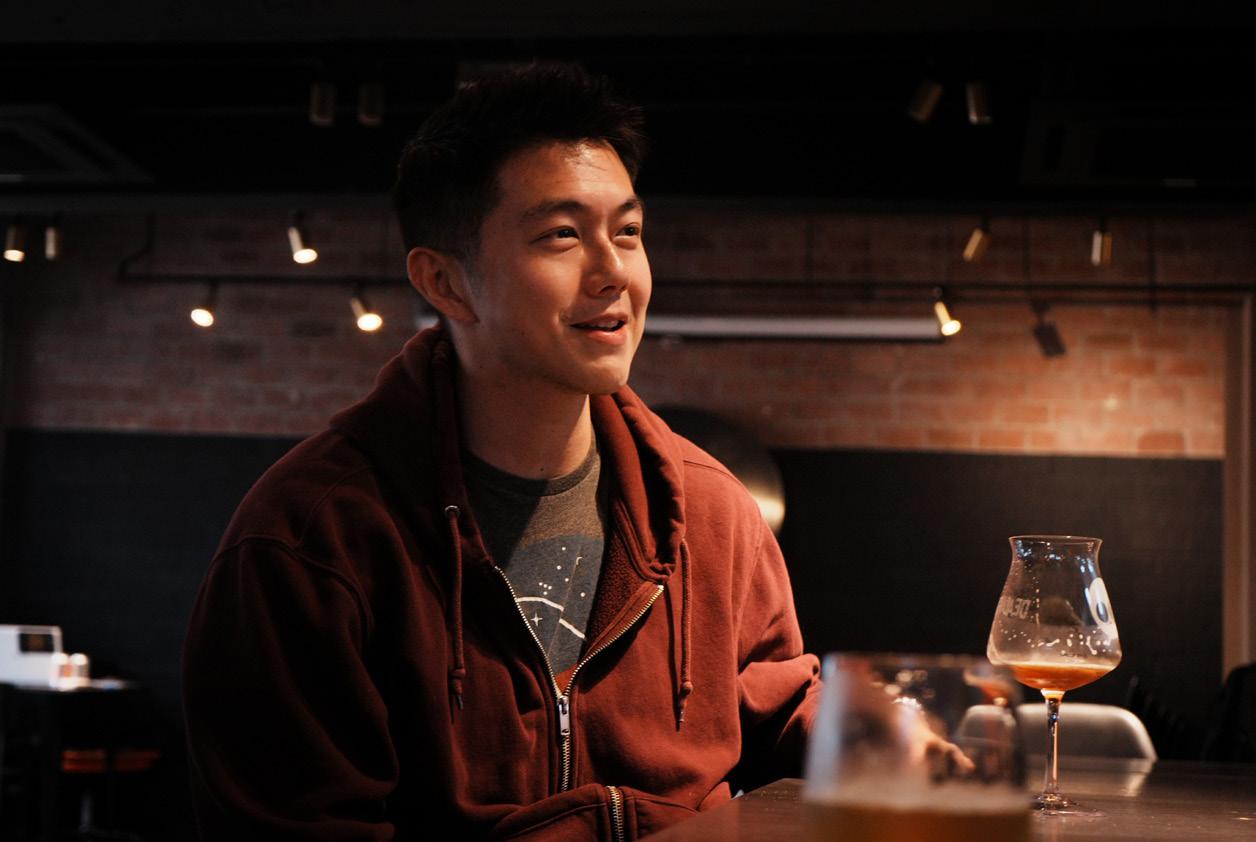
When Gerry was studying in Canada, he loved "West Coast Beer" which has a rich fruit juice flavour. After he returned to Hong Kong, he wanted to
he said, "If it's very fruity this time, try something really floral next time.”
Deadman's product line includes more than 40 kinds of beers, and the number is increasing with different beers being released seasonally.
“Like stouts are usually pushed out during winter time, and something light like lagers, is usually during summertime,” said Gerry. “We also develop limited editions, like imperial stouts and the honey beer for Peninsula Hotel.”
Cyrus Lau, the head of Zhangmen’s Mongkok shop, said coming into the Hong Kong market used to be a challenge for them, but gradually they gained a foothold in the new market amidst competition.
market competing on price, flavour, and technology," said Gerry. "There are always a couple of breweries out of business every month and you have to find what makes you stand out."
The rapid changes in people's tastes are another challenge for craft beer brewers. "Some days people really like pineapple beers, and all of a sudden, they move into apple flavour or even get tired of craft beer," said Gerry, "but we still have inventory for mass production, so we have to start competing price-wise which will make us suffer.”
In response to the frivolous taste of the market, Moonzen chose to flow with the market. “Today, our focus is no longer on
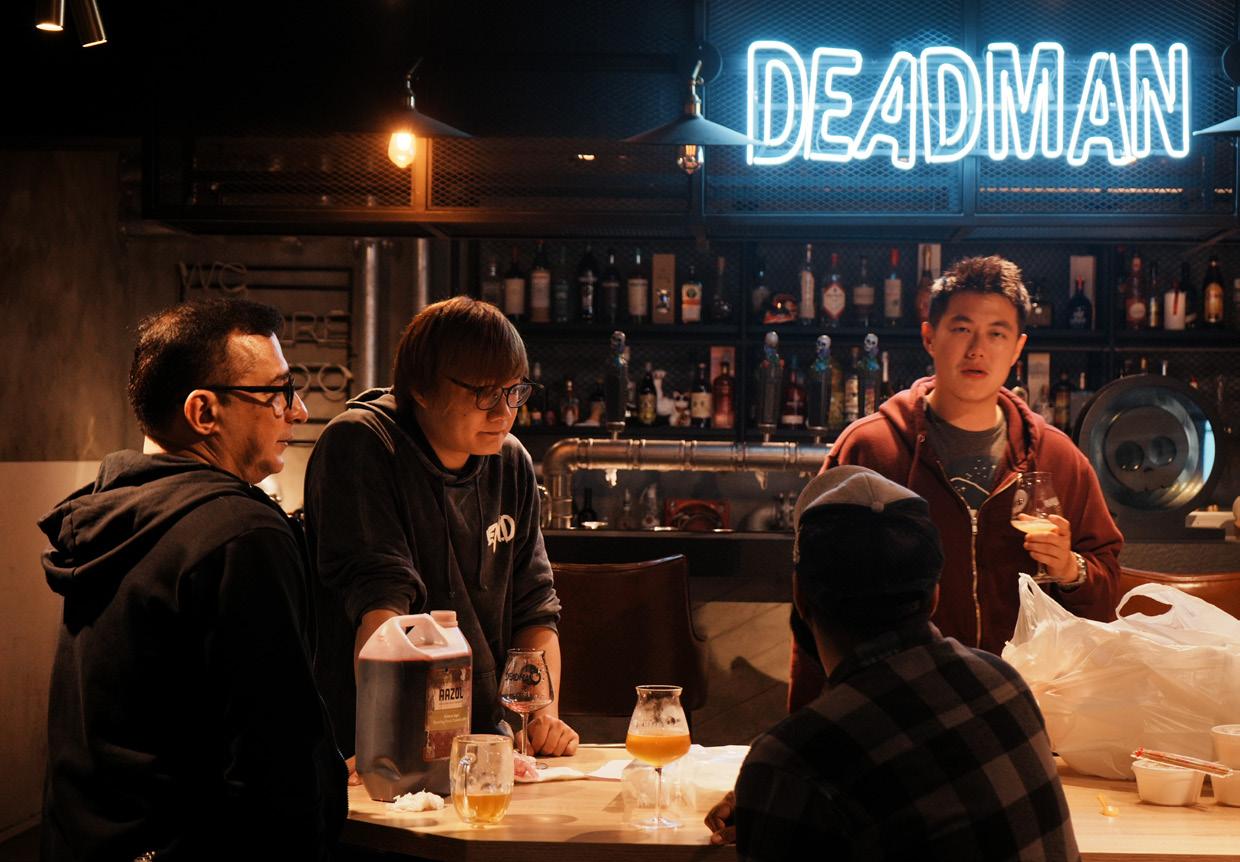
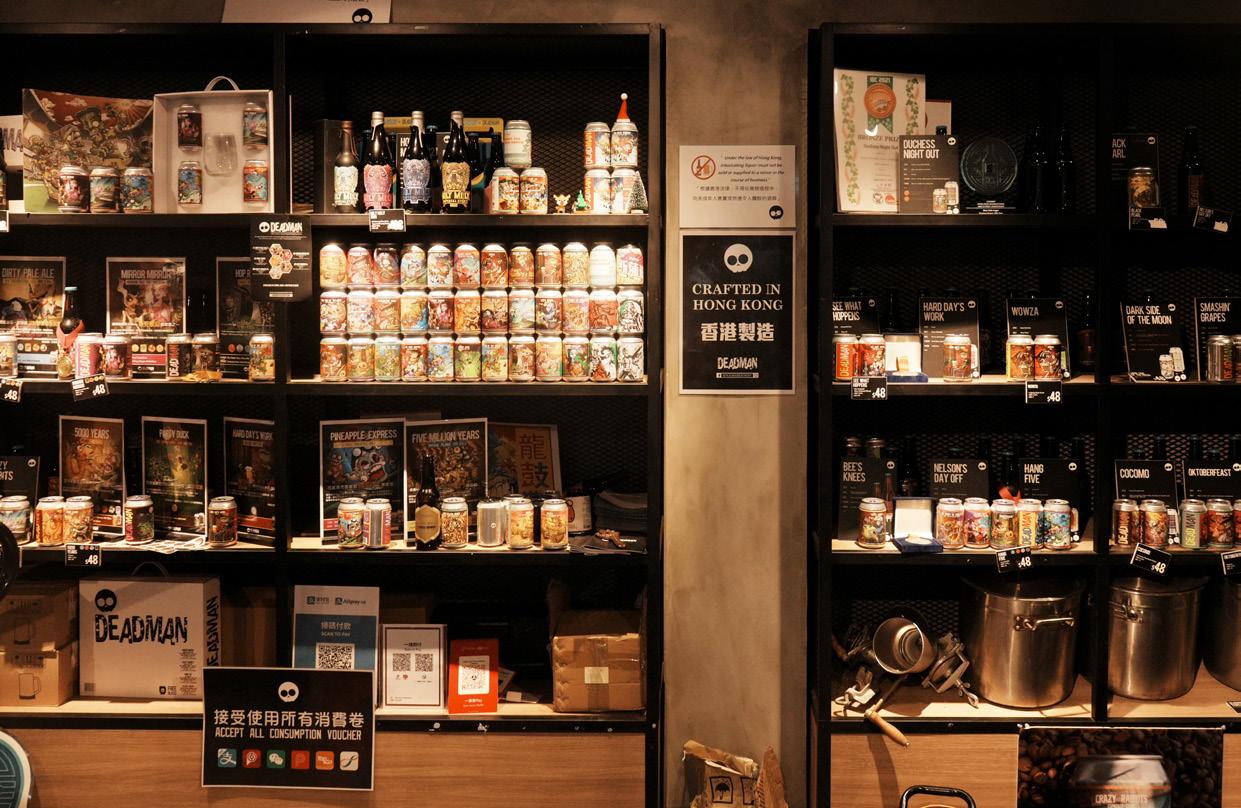
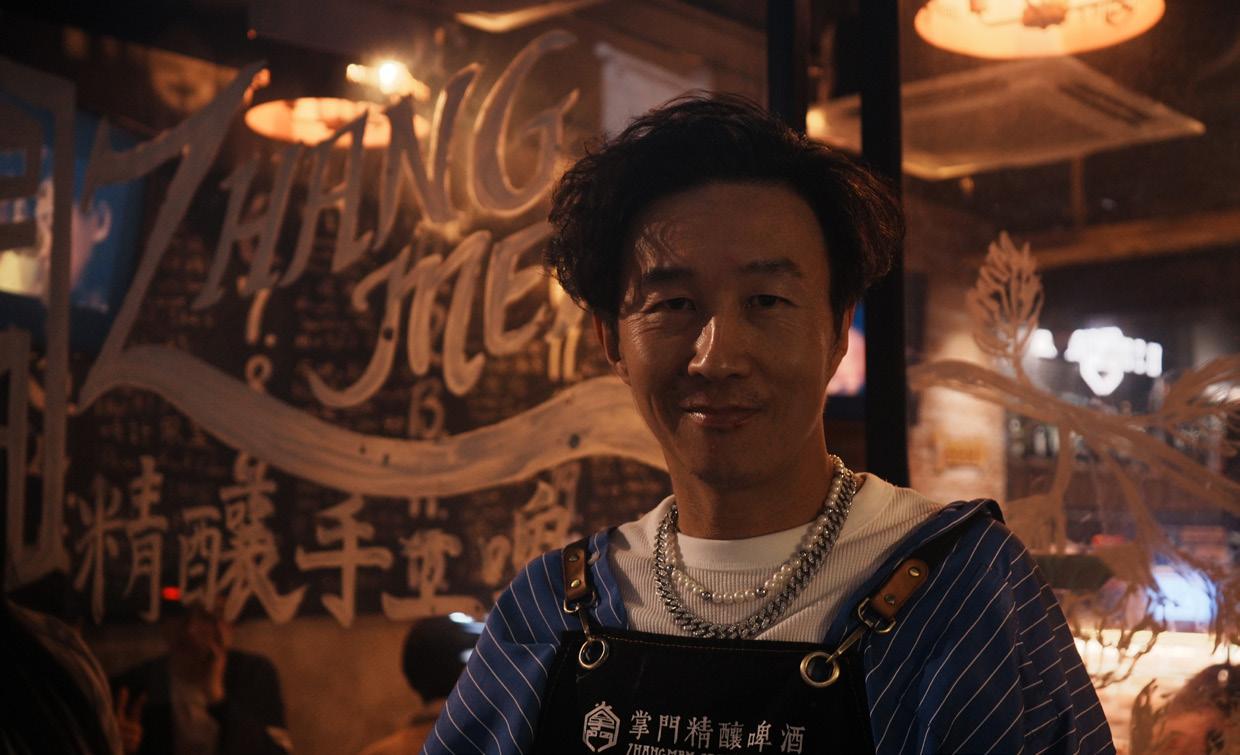
‘making beer’ but ‘making good beer’,” said Raphaël, “we need to talk to young drinkers and let them know about our brand,”.
"Our formula must also be adjusted appropriately to cater the preferences of new consumers. Such continuous innovation and adaptation is what we will do in the future," he added.
Island is also trying to do the same thing.
"We've watered down the bitterness in our newly launched craft beers and make it more sweet or sour" said Vicky Du, "because young people nowadays are fond of beers which taste like other drinks. l think that will also be the future trend of craft beers”.
Although Hong Kong's craft beer industry faces challenges such as fierce competition and changes in taste, there is no reason to downbeat it, said Vicky.
"Craft beers have a loyal customer base that appreciates our product, and this base will expand." she said, " craft beer is here to stay for a long time, so will 'Island' bar"

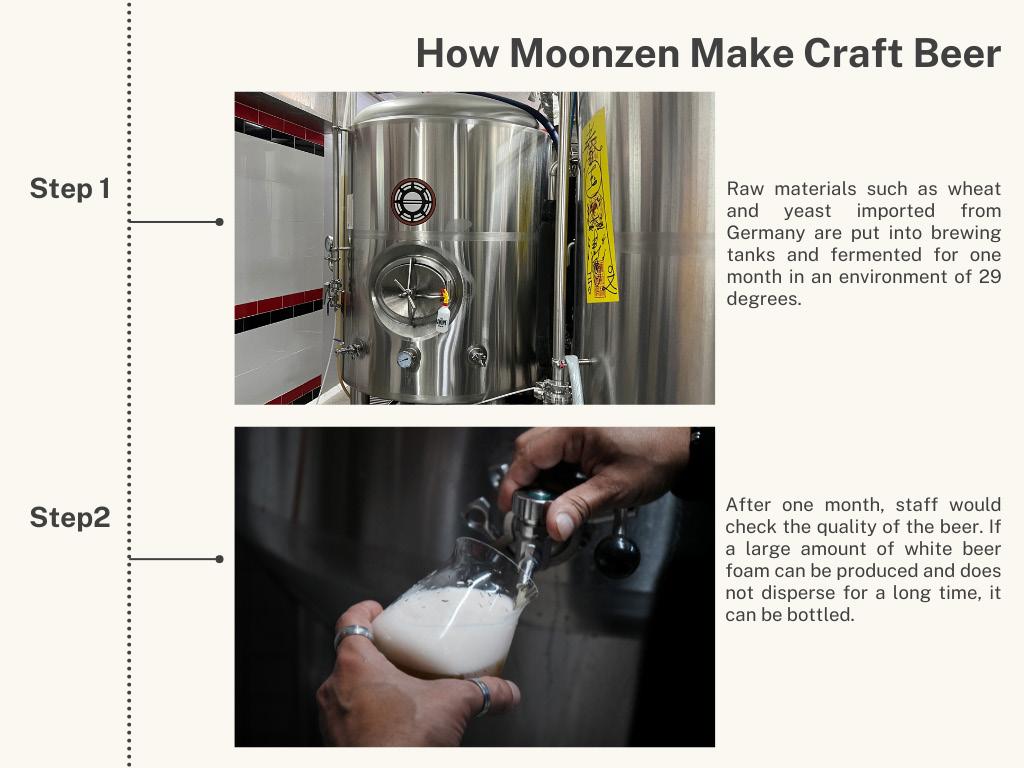


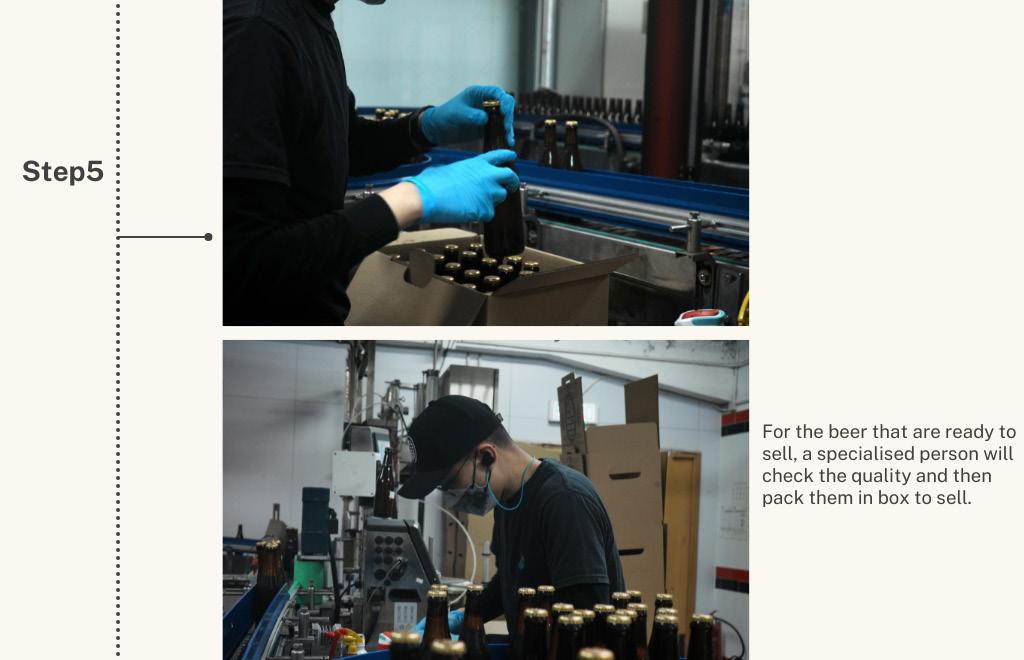
Intrepid snake watchers trudged through dense vegetation in northern Hong Kong, New Territory. Holding flashlights and expensive cameras, they trekked through wet grass and heavy mud in search of slithering snakes and vicious vipers.
Leading them is William Sargent, a grizzled tour guide. He used to be the snake catcher who was authorised by Hong Kong police. Since 2017, he has been organising "Snake Safaris", nighttime excursions in the lush and diverse landscapes of Hong Kong. Sargent’s groups venture into areas such as Tai Mo Shan Country Park, where some of Hong Kong’s highest peaks are located.
Every year from May to August, Sargent leads hundreds of adventurous visitors on these exciting expeditions.
Reported by
Xia
Fan, Zhang Yiping
Edited by Jiyoun Lee
“Some people are very scared of snakes, but they want to learn more. Some people are very interested. Some people want to introduce their children to wildlife to make them more interested,” Sargent said. “People that come on are very positive.”
Apart from the reputation of being a metropolitan and financial hub, Hong Kong is rich and dense in biodiversity. These attributes have attracted people worldwide to appreciate its unique charm and strive to protect its teeming wildlife.
According to Government data, Hong Kong boasts a rich biodiversity with around 3,300 plant species, 55 species of land-dwelling mammals, 115 species of amphibians and reptiles, 194 species of freshwater fish, and over 375 species of insects.
Professor Timothy Bonebrake, a Hong Kong University professor in biological sciences who studied snakes in Hong Kong, said snakes, being the main predators of many species, play an important role in the local ecosystem.
“The diversity of snakes in Hong Kong is very high, with more than 50 species, for such a small area. , The subtropical environment attracts various snake species,” he said.
Bond Shum, founder of Outdoor Wildlife Learning Hong Kong, felt this dense biodiversity was overlooked.
After graduating from the Ecology and Biodiversity Department in Hong Kong University, he founded Outdoor Wildlife Learning Hong Kong with two others in 2016. The non-government organisation focuses spe-

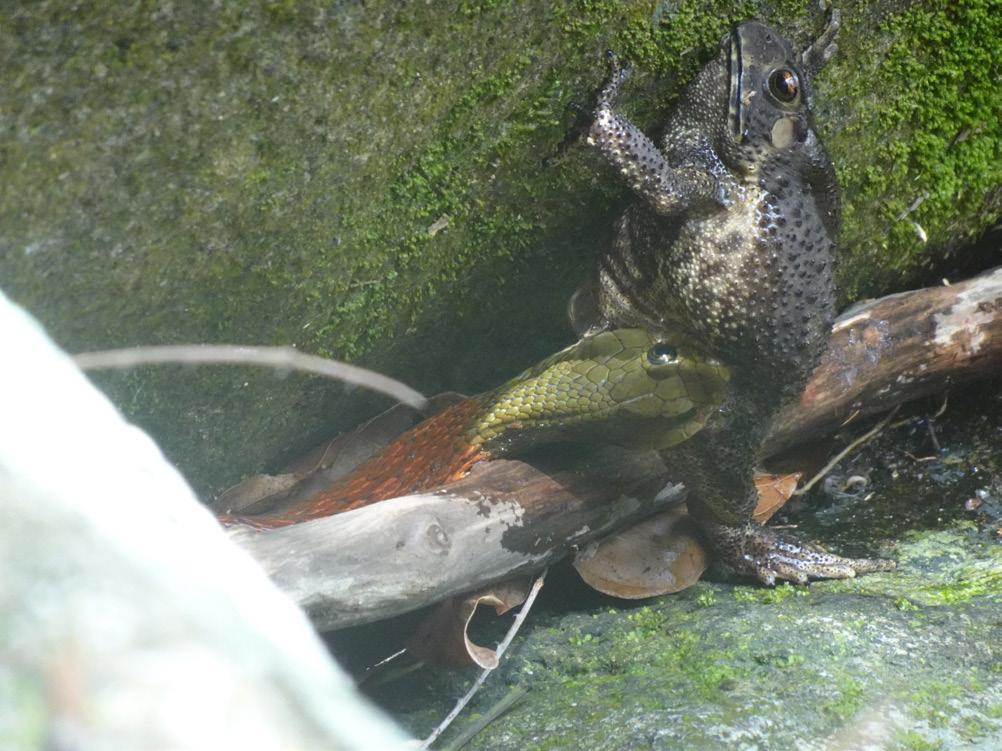

cifically on educating audiences of all ages about the beauty of nature in Hong Kong through interest-tailored projects.
“Education is the root of environmental conservation. Exposing children to nature will make them more open to conservation.” Shum said. He believed it is especially important for young kids to be exposed to nature.
Martin Williams, a nature photographer who came to Hong Kong more than eight years ago to write stories about local wildlife and conservation issues, said the rich biodiversity of Hong Kong could be appreciated by more people.
“Hong Kong is rich as a place for biodiversity, but a lot of people do think it is just a metropolis,” said Williams.
With over 570 species recorded, Hong Kong also boasts onethird of the total bird species in China. According to Williams, bird watchers and experts from places such as Europe, America, and Australia used to join his wildlife tours.
Williams thinks many locals are not aware of the rich biodiversity here.
“For locals, they don't go hiking and see much of it, which is a real shame because they live so close by,” Williams said.
Professor Alice Hughes, Associate Professor at the University of Hong Kong in biodiversity and wildlife, believed tours are a great way to enthuse and engage people.
"Most people are simply unaware of the fact that there's a huge amount of biodiversity on their doorstep, while they should be celebrating that be-
cause it adds colour to the city," she said.
Hughes is concerned that the loss of habitat as a result of the city’s development poses a threat to local wildlife.
One example is the Blackfaced Spoonbill. A study by Greenpeace and the Conservancy Association found that the Northern Metropolis scheme has damaged 78.7 hectares (195 acres) of wetlands in the New Territories. These wetlands are winter home to 78 black-faced spoonbills. Black-faced spoonbills are a globally endangered migratory bird with an estimated world population of 6,162 individuals, according to the Hong Kong Bird Watching Society.
Negative legacies, like the destruction of wetlands from the Northern Metropolis scheme and the potential loss of reefs


from Lantau Tomorrow Vision, a postponed mega land reclamation project in the eastern waters of Lantau Island, are often seen as secondary or left out of the environmental impact assessment, Hughes said.
"We need to stop the loss of any future habitats, build on brownfield sites rather than greenfield sites, and think about the efficiency of land use," she added. She suggested that Hong Kong should plan the land in use better while following the mainland's footsteps in using solar power energy and establishing ecological conservation redlines.
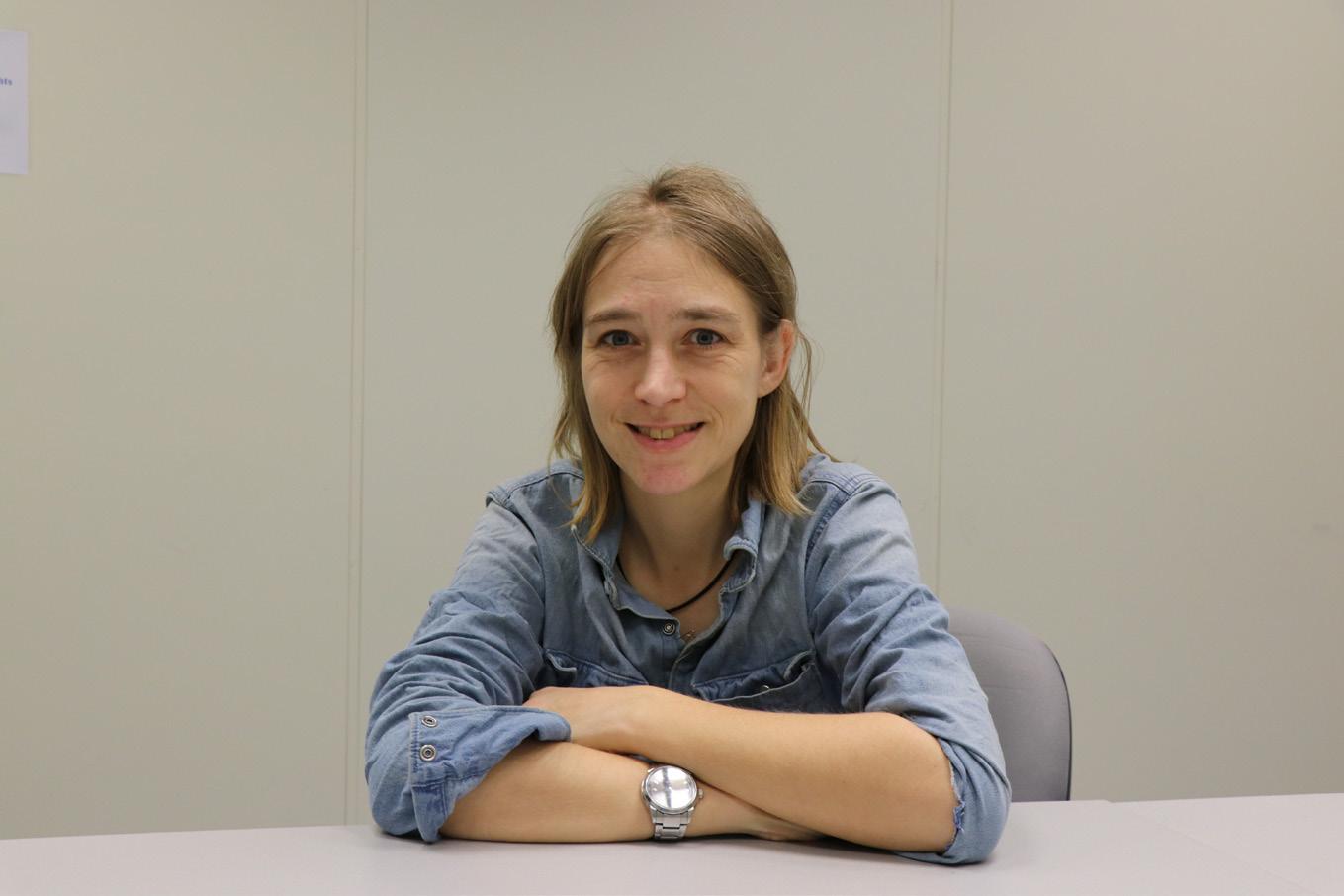
"Biodiversity and healthy ecosystems are like a Jenga tower. When we pull out one piece, nothing happens. When we lose this species, nothing happens. But as we progressively lose more, everything becomes more unstable, and at some point, it collapses,” says Prof. Alice Hughes.
Reported by LIU Yutong and BO Chuxuan
Edited by Yuqi CHU

Christina Ho tried to keep the airplane’s rudder steady while responding to air traffic controls.
She used to be a fashion designer but became an airline pilot for one of Hong Kong's leading airlines five years ago. Only
5.8% of the commercial airline pilots in the world are women, according to the data released by the International Society of Women Pilots.
“As one of the few girls with no experience or engineering background in the class, I
always reminded myself not to compare with others but only try my best,” Ho said. “I’ve never worried about the difficulties of being a woman or other people’s prejudice.”
Ho once had an opportunity to enter the cockpit and watch the
captain's professional operation when she was a flight attendant. She fell in love with this career and was attracted by its multi-tasking characteristics.
“My heart beats faster and faster while taking off and speeding up, ” Ho said. “This experience inspired me to take hold of the motivation to learn when I come across something that captures my interest. ”
At first, Ho’s mother didn't understand the hard work involved in the pilot training course.
“After I flew with my mother for more than two hours in Australia when I graduated, my mother learned more about my work, understood my pilot dream and supported my career,” Ho said.
Being a pilot is one of a number of professions that’s traditionally dominated by men.
According to LinkedIn’s 2021 Opportunity Index, 41% of women in Asia Pacific believe they have fewer career development opportunities than men. A third of them thought gender was a barrier and there’s a lack of mentorship for women.
Taki Li, 33, a head bartender at Bar Leone in Central, has been in this field for eight years.
“My family was initially worried about the safety of a girl coming home late at night and uncertain about the bad influ-
ence brought by this industry,” said Li.
According to a report by the world of Chinese, the ratio of male to female bartenders in China is about 3:7.
Li attempted to break the prejudice by sharing her story and participating in different bartending competitions on television.
She won the Herno Gin Cocktail Award 2023 and Diageo World Class HKMO 2021 and her family’s acceptance of her career choice.
“I want to prove to them that female bartenders are professional and creative, and will put in 100% effort,” she said. “I really love this job. Time will give my family a better understanding.”
"I can see that more and more female bartenders are showing up at cocktail competitions," Li said. "It depends on your ability, not your gender".
Li said women bartenders tend to do well in taste matching and aesthetics of cocktails. They also communicate more with customers to create the flavour they like, and provide gentle services.
The construction industry is yet another sector that’s dominated by male workers. The proportion of women working in the industry is 2.2%, approximately seven times less than men, according to the 2021 Census Report released by the Hong Kong Census and Statistics Department.

Taki Li enjoys standing and bartending at the bar, feeling like she is shining on this "stage".
“Most women are at a disadvantage when it comes to promotion,” said Cai Jiaxiu, 38, Assistant Professor at the School of Architecture, Chinese University of Hong Kong, who has been in the construction industry for more than 10 years.
“Female architects face more skepticism than trust when bidding for jobs,” Cai said.
“Female as programme presenters tend to have very different results from men.
“The construction industry is physically demanding and time-consuming, often requiring us to stay up late, which is a challenge for women especially those who got married and have children,” she added.
Even in industries that hire as many women as men, there is often an income gap, according to Rose Lu Qiu, an Associate Head and Associate Professor who studies gender equality and feminism at the Hong Kong Baptist University.
Being recognized as “Rose in the Battlefield”, Lu Qiu was the first Chinese female journalist reporting in Afghanistan in 2001 and in Iraq in 2003.
“Women have to be more capable than men in order to get the same promotion opportunities,” said Lu Qiu.
According to the data released by the Census and Statistics Department, the median income
gap between men and women in Hong Kong between October to December in 2023 is about 16%.
Cai Jiaxiu believed that a main reason for the income gap is the different positions that women and men hold.
“Because of the difference in the physical intensity of the jobs, men tend to choose the construction side, while more women choose urban design positions,” she said. “The combination of heavier physical strength and specialized knowledge tends to pay more in Hong Kong.”
“However, salary cannot fully represent the difficulty level of work and contribution to society. Women demonstrate greater integrated understanding, coordination, and empathy when a design takes into account political, economic, and social factors, as well as human convenience, ” she added.
Quitting work because of childbirth and childcare is another reason for the income gap between women and men, said Ho.
“The salary depends on experience levels based on a pilot's flight time,” Ho said. “Some female pilots are unable to fly for periods of time when they have a baby, which may affect her salary.”
Apart from the income gap, sexual harassment is also a prob-
lem. According to Hong Kong Equal Opportunities Commision, 11.8% of the respondents experienced sexual harassment at work in the past 24 months, with about 6% more women than men in 2021.
Li said interactions with male customers in the bar are inevitable. She usually softly refused them or changed the section with teammates if they invited her to drink together after work.
“I cannot reject them aggressively because the customers come first in the nature of the service industry, so I try my best to keep a decent distance with them,” Li added.
“But being brave enough to say no when being harassed is also necessary,” Li said. “As a woman, we need to protect ourselves.”
Cai said she also felt offended when other male counterparts treated her as a female first instead of an architect. Some of them even publicly insulted her, referring to her gender.
“Due to the conservative social environment, our generation was slow to react to the assault and harassment toward women at first and would especially take it for granted when it comes to drinking,” said Lu Qiu. “But, I’m glad to see that young women nowadays are resistant to such a culture, and this is a reflection of the progress of society.”
Hong Kong has implemented the Sex Discrimination Ordinance since the 1990s, making gender-based discrimination or harassment illegal in employment and establishing the Equal Opportunities Commission to enforce the law.
“The EOC put forward proposals to amend the anti-discrimination legislation in 2016 to protect women's equal rights, including expanding the scope of protection against sexual harassment to cover people working together,” said Sam Ho, a senior corporate communications manager of the EOC. “The Hong Kong Government has adopted the proposal with effect from 2021.”
“Women's development is often limited by gender stereotypes,” said Sam Ho. “We have various publicity and education programmes on social media, including an Instagram campaign called "EO Matters" to encourage the community to eliminate gender stereotypes and promote equal opportunities for both genders ”
“Using animated illustrations and interviews, the posts follow the interests of young people and inspire them to think about hot topics,” he added.
“We need more female role models to change their dilemma in male-dominated industries," said Luqiu. “From the perspective of communication, it is important that female figures
continue to be seen. ”
Christina Ho appeared in the advertisement for her company as one of the leading airlines in Hong Kong as a female pilot two years ago.
“Lots of ads featuring tall and handsome male pilots. I want people to see more female role models and get more girls interested in becoming pilots,” she said.
Ho’s organization tries to foster a more inclusive workplace for women with a dedicated Diversity and Inclusion Department.
“Being open-minded to everyone's needs is the key,” she said. “For example, we invite female employees to share their stories and find out about their difficulties every year on Women's Day.”
Cai’s organization set up more instructions to balance the gender ratio of the job when hiring or promoting, including some subsidies.
“Gender equality in the workplace and more aspects has never just been a women’s issue,” said Luqiu. “It's impossible to change the current situation without men's reflection and awareness as they occupy the main position and resources.”
“The ideal would be to use ability rather than gender to determine who can do what,” Luqiu added.
To improve the social norms, Ho set up the topic ‘life lessons from the sky’ on social media to share her career experiences in order to empower women to be interested in becoming pilots.
“
Think about whether this is something you really want to do, rather than thinking about difficulties as a woman and others' opinions. Don't limit yourself by gender.” Christina Ho said.
Report by Wang Jing, Yang Shuyi
Edit by Cheung Wai Sum, Li Ben Rong
Ng Yu-fung’s father was at his deathbed at Nam Long Hospital, a specialist hospital for cancer patients. “What makes me regret is that I was afraid of my father's death when he was near the end of his life,” Ng recalled. His father’s last moments of life inspired him to become a volunteer in hospice care. Today, Ng is president of the Hong Kong Hospice Social Workers Association.
The association’s goal is to enhance a patient’s quality of life before the end, focusing on pain management, spiritual care, and palliative care.
Hong Kong ranked 20th among 80 countries in the 2023 in quality of death according to a white paper published by the Economist Intelligence Unit. In 2015, Hong Kong ranked 22nd among 40 countries.
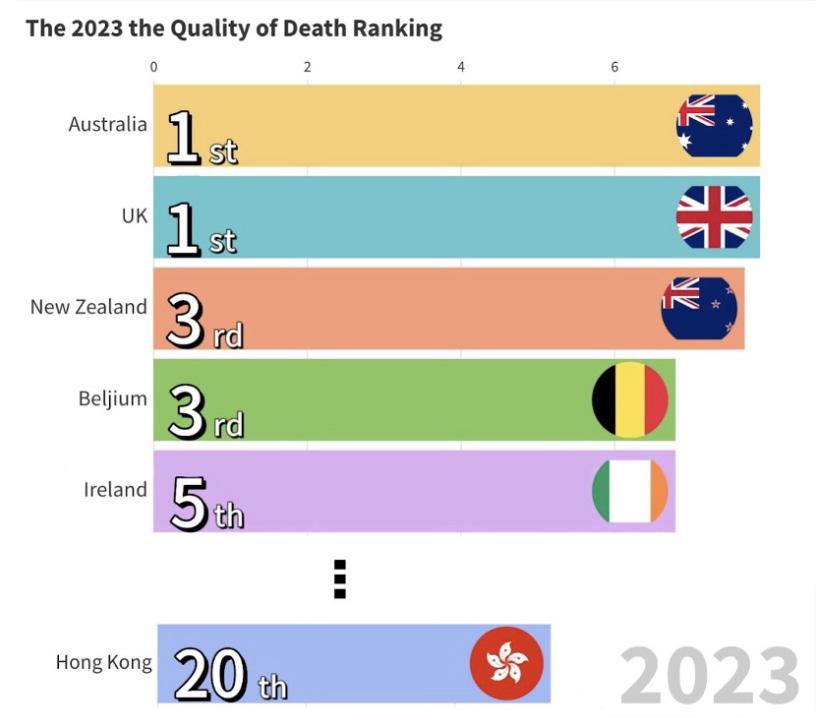
Source: The quality of death Ranking end-of-life care across the world, Lien Foundation Quality of Death Ranking (2023)
The Index scores countries across four categories: basic end-of-life healthcare environment; availability are; cost and quality of care.
End-of-life care involves palliative care and hospice care, thus the progress of hospice care in Hong Kong contributed greatly to the rise in rankings.
Dr. Fowie Ng, vice president of the Hong Kong College of Health Service Executives said that the progress of hospice care in Hong Kong is caused by many factors, including the city’s medical and social services.
“The Hospital Authority has set up a ward specifically to treat end-of-life patients. It used to be the responsibility of the Bradbury Hospice Centre, but now it has expanded to many hospitals setting up these ward services on hospice care,” Dr. Ng said.
Chan Mok-kwong, president of the Hong Kong Hospice Society said that not only has the government paid more attention to the development of hospice care in recent years, but the support groups who promote education and improve hospice care services have also made a lot of effort.
“If the patients have financial difficulties, we will help them apply for subsidies, and the fees will be relatively reduced or even waived,” Chan added.
Hospice care is not only about caring for the patient but also about caring for the psychology of the patient’s family members.
“We will have a dedicated nurse to follow up every case. The final step in handling a case is for nurses to help the family members of the deceased manage their emotions until they are restored to normal,” said Chan.
Ng created Relic Transformation, a new way to help with grief counselling for family members. It involves making pillows from the clothes of deceased relatives.
“The tradition in Hong Kong is to throw away all the clothes of the deceased to avoid missing the person. We hope to provide another direction to make people rethink the meaning of relics to the living,” said Ng.
“We will add elements of psychotherapy, combined with verbal guidance, and invite the family member to pick up the pillow and hug it,” he said.
The 2021 Hong Kong government census shows that the proportion of elderly people aged 65 or above reached 20.5%, and this proportion will continue to rise.
In 2000, Taiwan introduced Hospice and Palliative Care Regulations, providing a legal basis for medical autonomy for terminally ill patients and implementing hospice services.
In 2015, Taiwan passed the Patient Autonomy Rights Act to establish the legal basis for Advance Directive in relation to Medical Treatment (AD), enabling terminally ill patients to make their own decisions on whether to receive life-sustaining treatments.
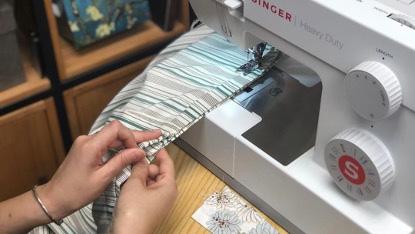
A family member sews the clothes of their deceased loved one into a pillow.
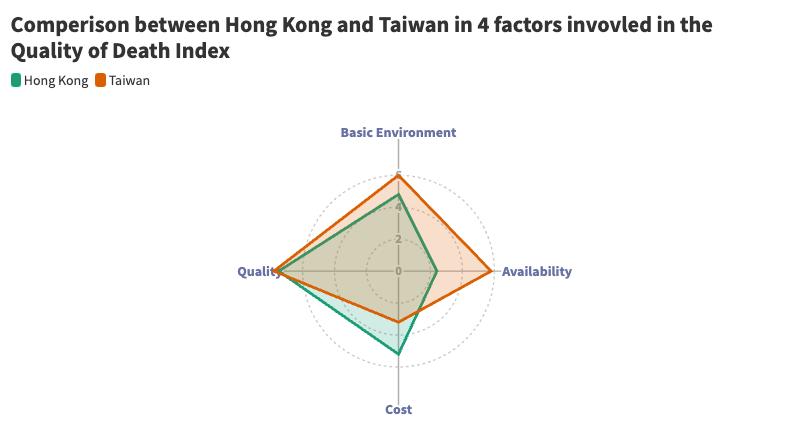
Source: The quality of death Ranking end-of-life care across the world, Lien Foundation Quality of death Index: Hong Kong and Taiwan(2023)
But in Hong Kong, there is no legislation on hospice care.
“When I visited the elderly homes, people there were very afraid of ‘Daughter from California syndrome’. That means usually their children don't care their parents’s life, but when the parents are sick, they will fly back and disregard their wishes to give first aid,” Ng said, “This does not allow the patients to get the respect they deserve before they die, and the patient's rights need to be protected by law.”
In addition, the hospice care system in Hong Kong has yet to take shape, and there is a lack of government resource input.
“Hospitals that providing hospice care services is small, and there is a shortage of relevant professionals,” Chan said.
Overall, the government has
not shaped a social atmosphere to know about hospice care. “I think one of the most important things is whether seniors and their families are aware of hospice care,” Ng said.
He added that people often have a misconception about hospice care, thinking that by choosing such a service they are giving up on saving the patient's life, but in reality, it's a different kind of medical treatment.
There was a lack of attention to the grief counselling aspect of the patient's family in hospice care as well.
“Their friends and relatives may not understand or even criticise them when they express their grief, as if the right to grieve is taken away,” Ng said.
“Hong Kong culture believes that patients should be in the hospital when they are dying,
and if a patient's sick or being treated at home, it'll affect the feng shui of the house,” Ng said.
Ng added that it is difficult to provide good hospice care for the terminally ill at home because of the cramped living environment in Hong Kong.
Even though it is legal to die at home under the current law, these two factors prevent many patients from choosing to die at home according to their own wishes.
However, the fact that elderly people do not have the option of passing away at home does not mean that they will be sent to hospice care centres, and most of them will be sent to elderly homes only.
“It is hard for elderly homes to provide hospice care because the training of the staff and the
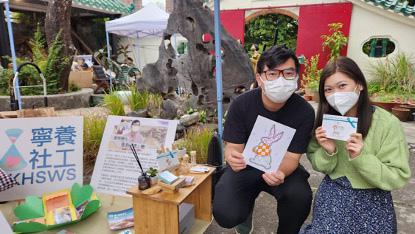
Ng has written two picture books about life and death education.
equipment aren't set up for such services,” Chan said.
Last November, the Legislative Council introduced the Advance Directives for Life-Sustaining Treatment Bill. This provides a legal framework for advance directives on medical treatment and orders not to perform cardiopulmonary resuscitation (CPR), as well as legal protection for health care and rescue workers in enforcing these two documents.
The Society for the Promotion of Hospice Care, one of the major hospice care organizations in Hong Kong, aims to provide training at residential care homes for the elderly to teach staff how to provide hospice care services. The group also offers guidance to operators on how to optimize their facilities so that the elderly can receive better care.
In addition, the association provides medical personnel to the homes to provide medical treatment to the patients, issue legal death certificates when the patients die, and provide support to take the patients' bodies to the funeral halls.
Hong Kong Hospice Social Workers’ Association is also promoting life and death education, and encouraging more people to join the ranks of social workers in hospice care.
“I am now trying to publish my own life and death picture book. I hope it will be the first life and death picture book in Hong Kong,” said Ng.
Ng said that some large insurance companies are now covering palliative care.
He hopes that the Hospital Authority can provide more relevant services to them.
Chan said that the government should not only pay more attention to hospice care in terms of a legal framework, but also provide more resources, such as beds, healthcare workers, medical training and so on.
“Various organizations and the government should work together to promote Hong Kong's success in this area,” Ng said.
